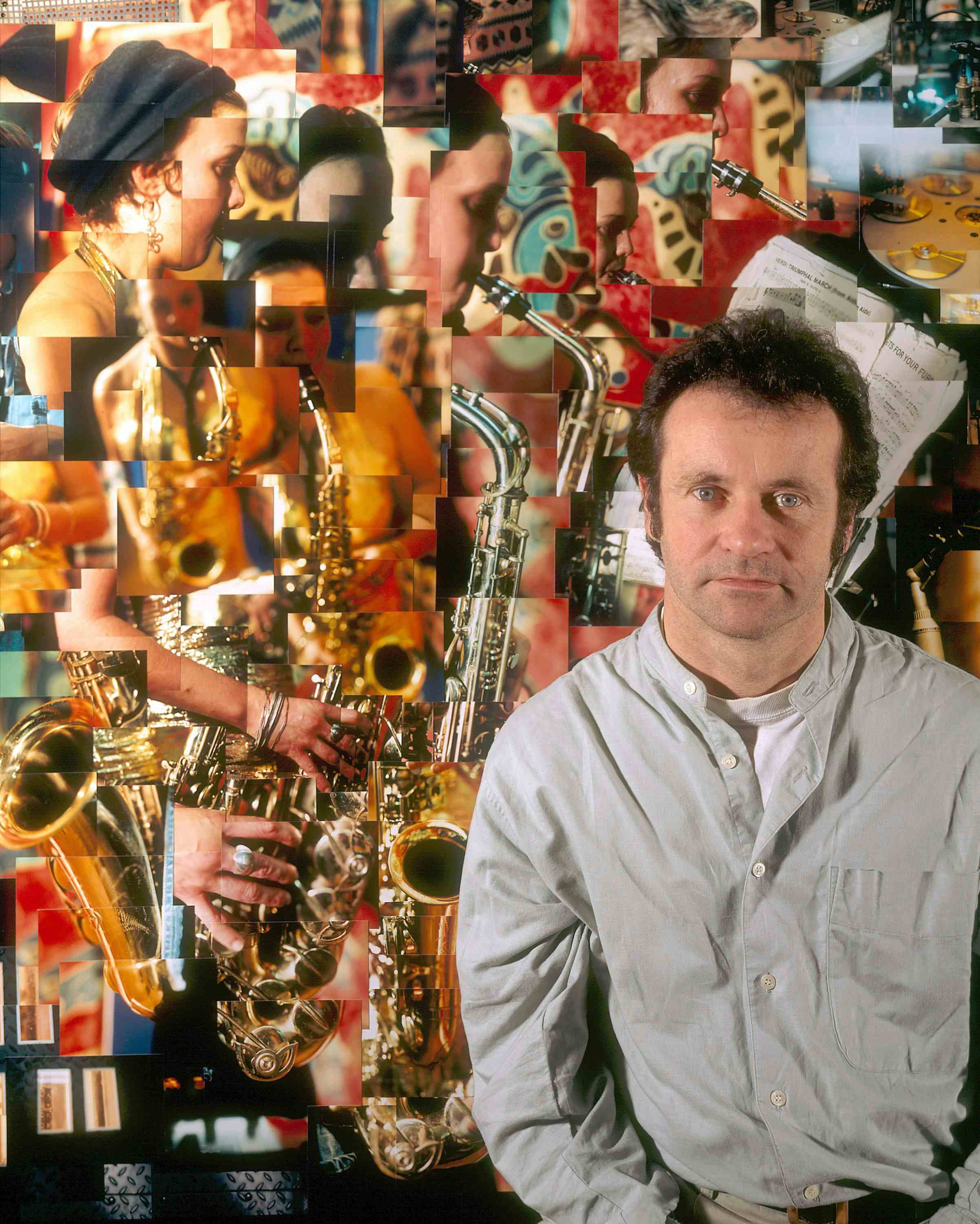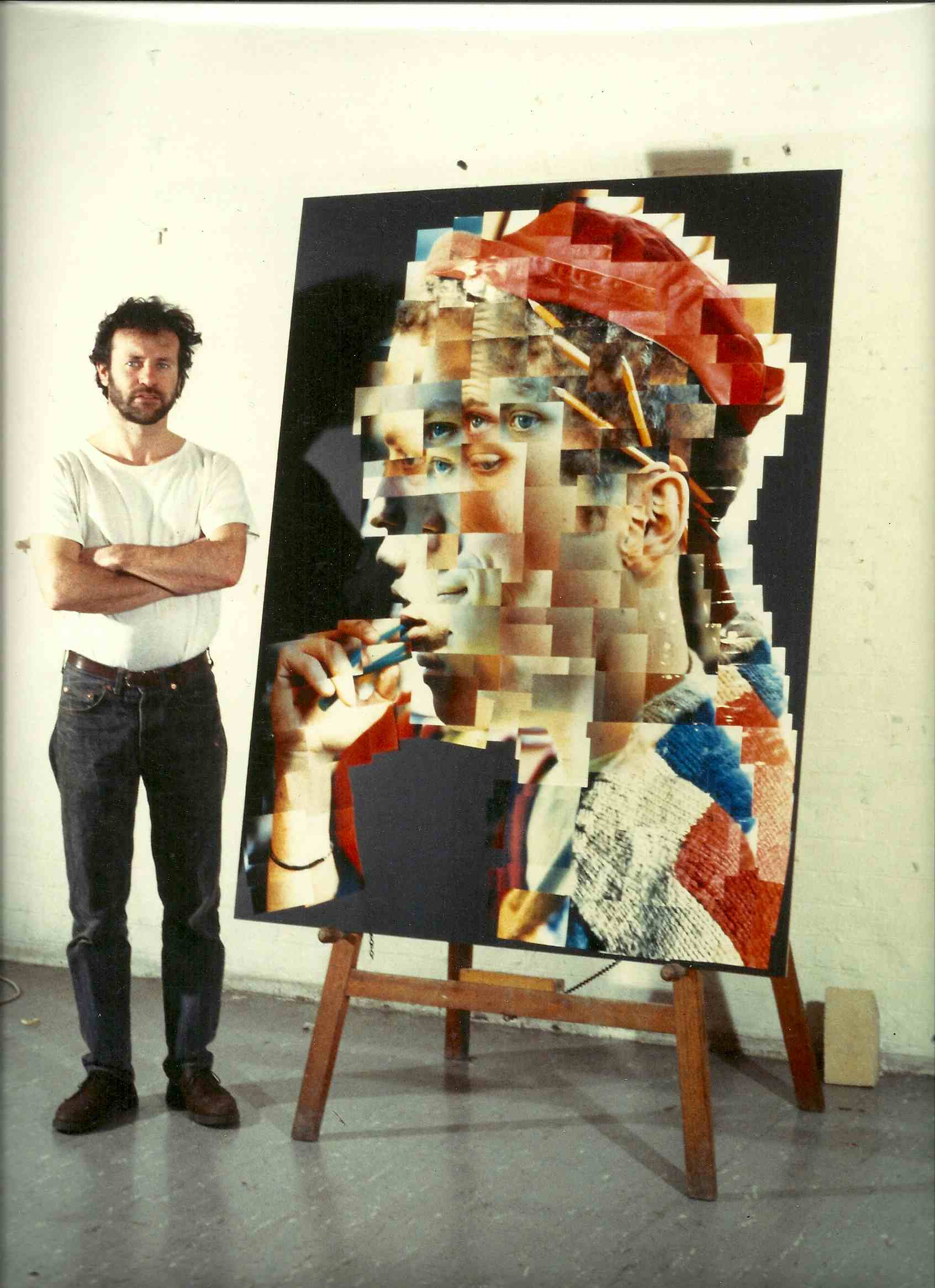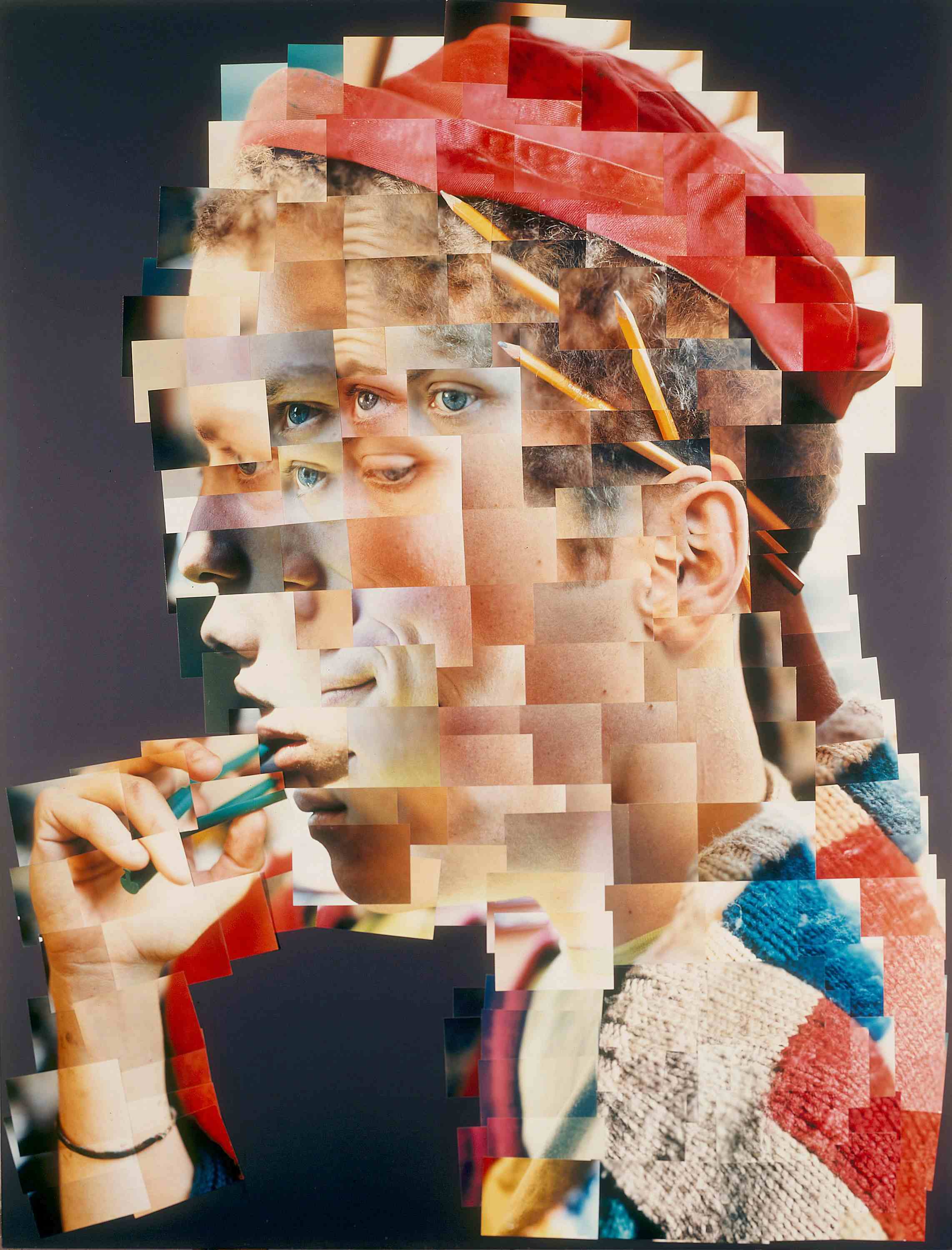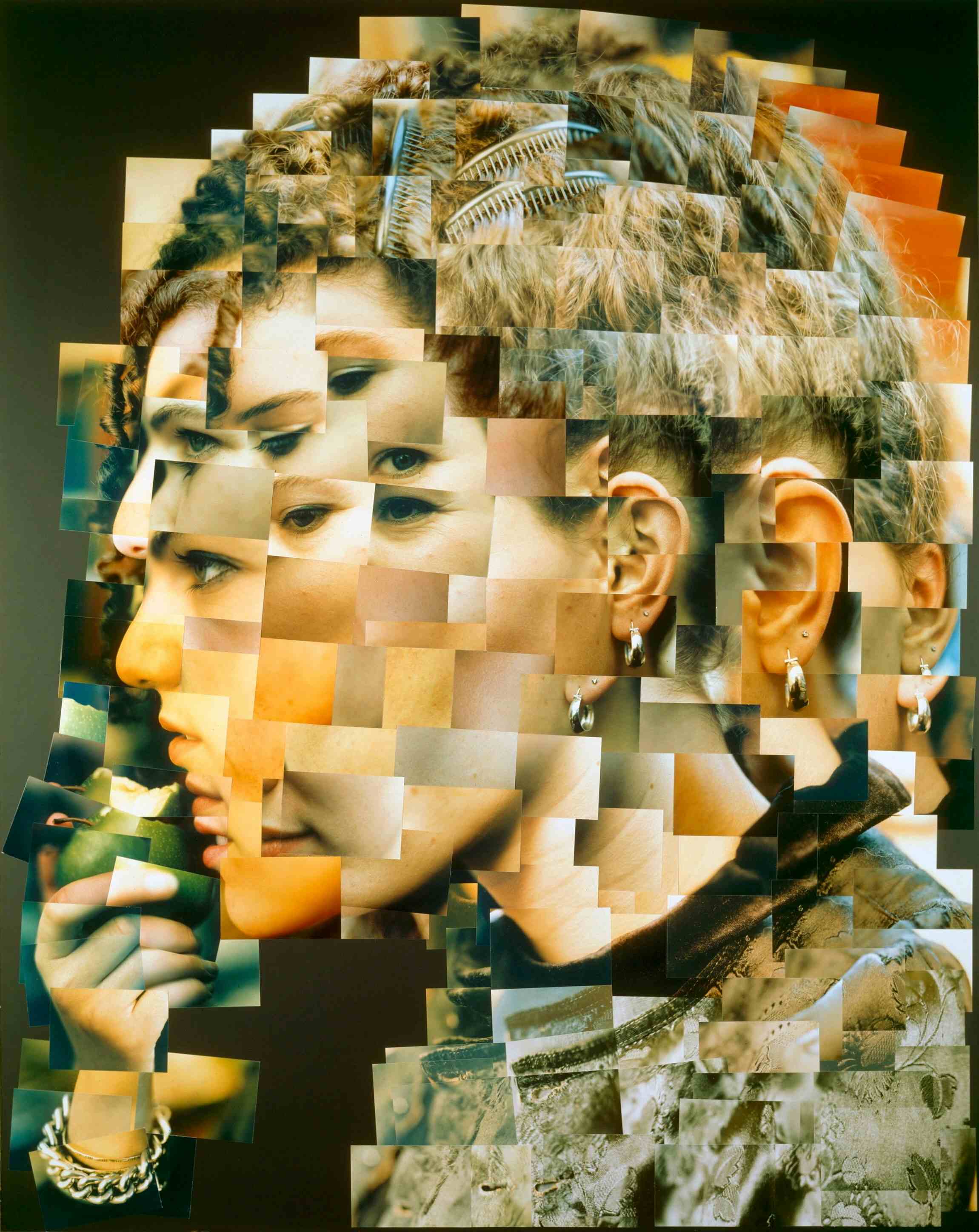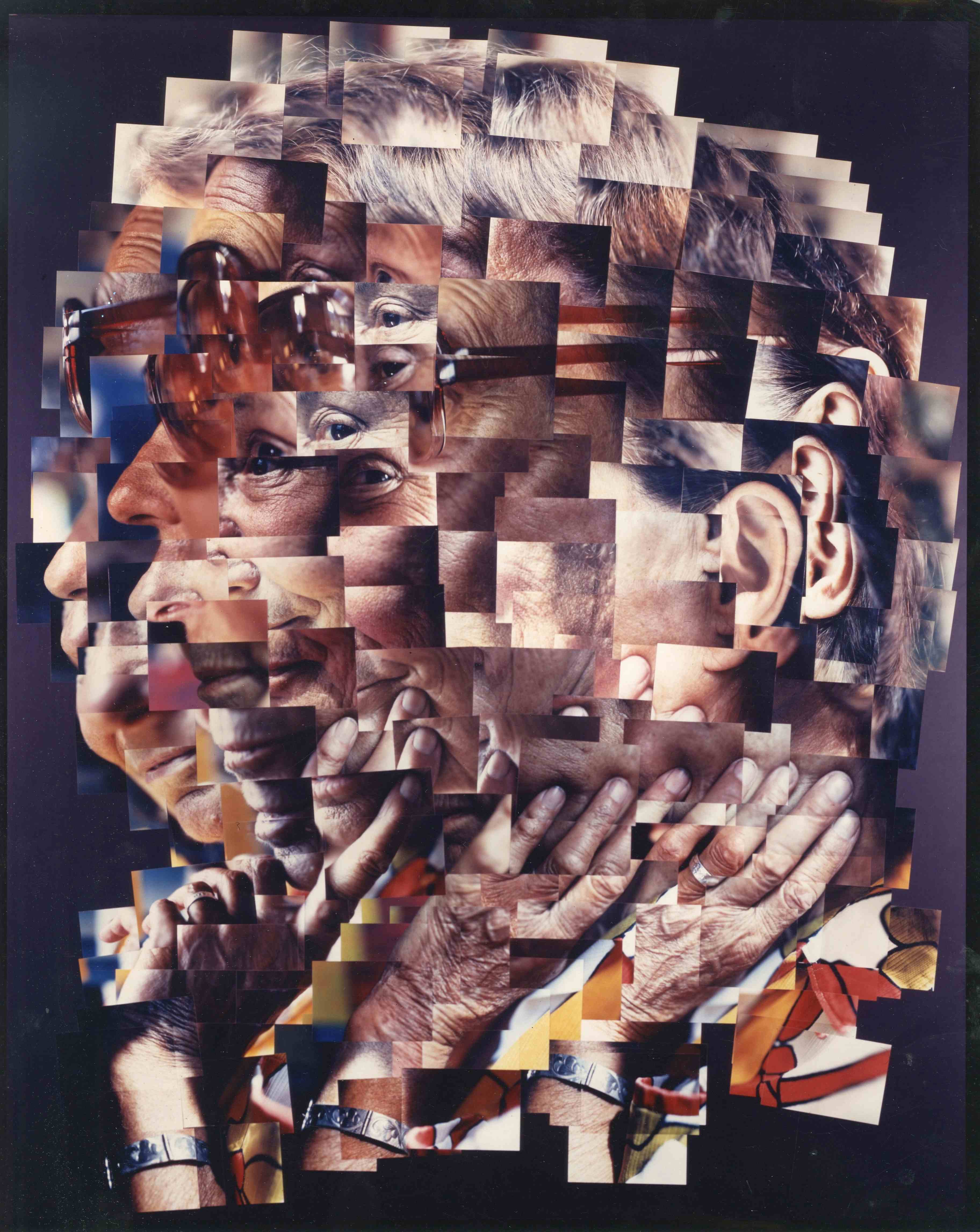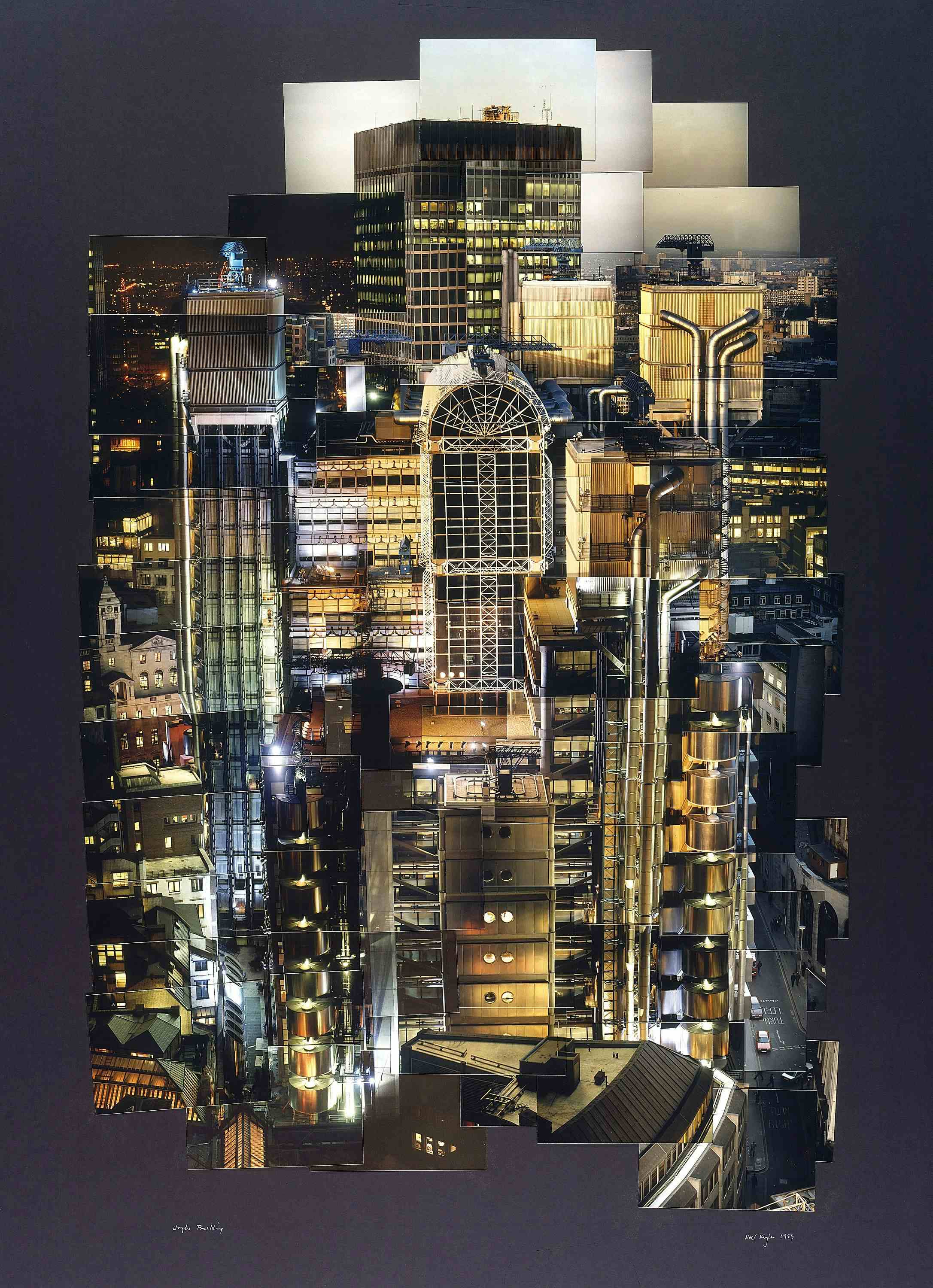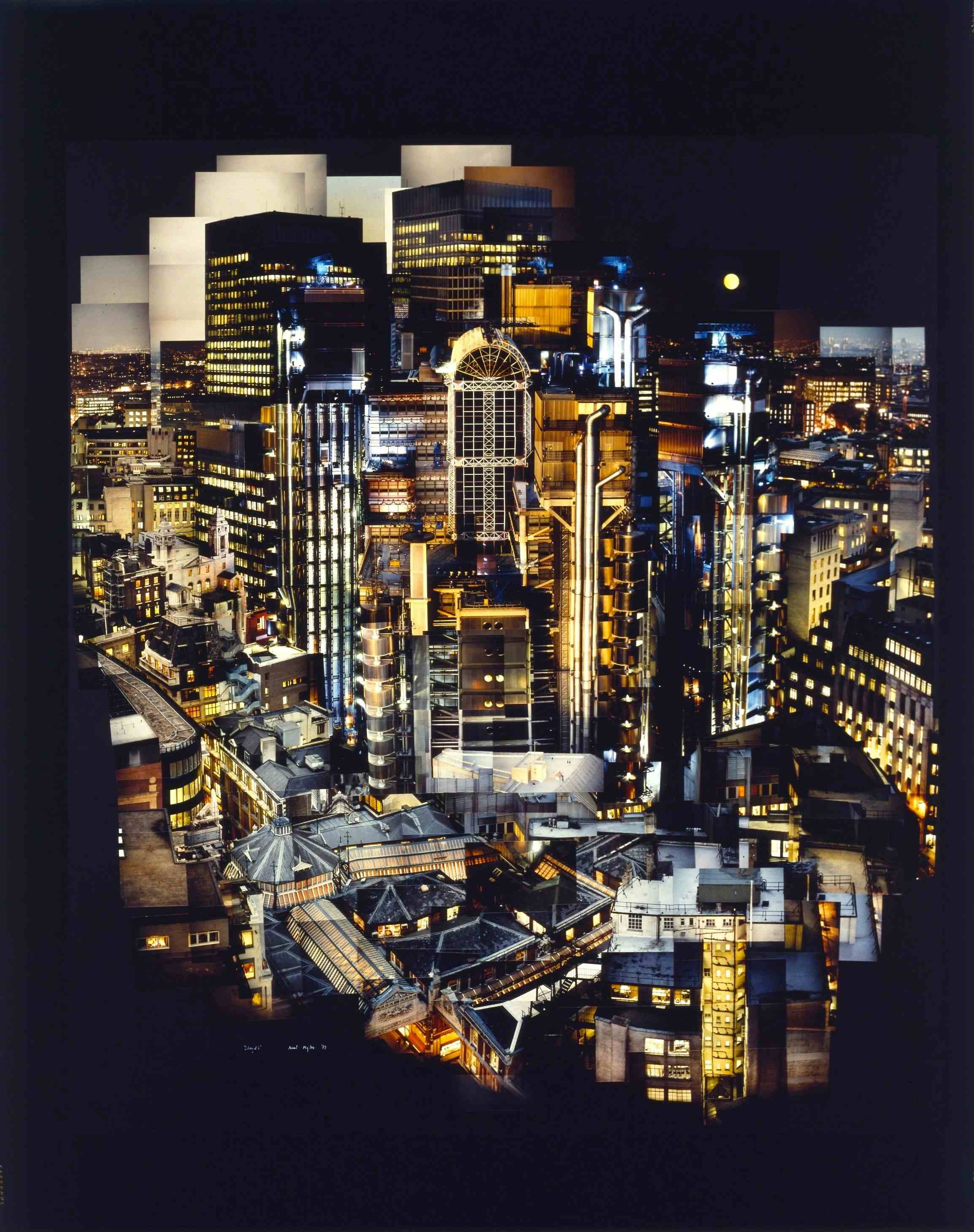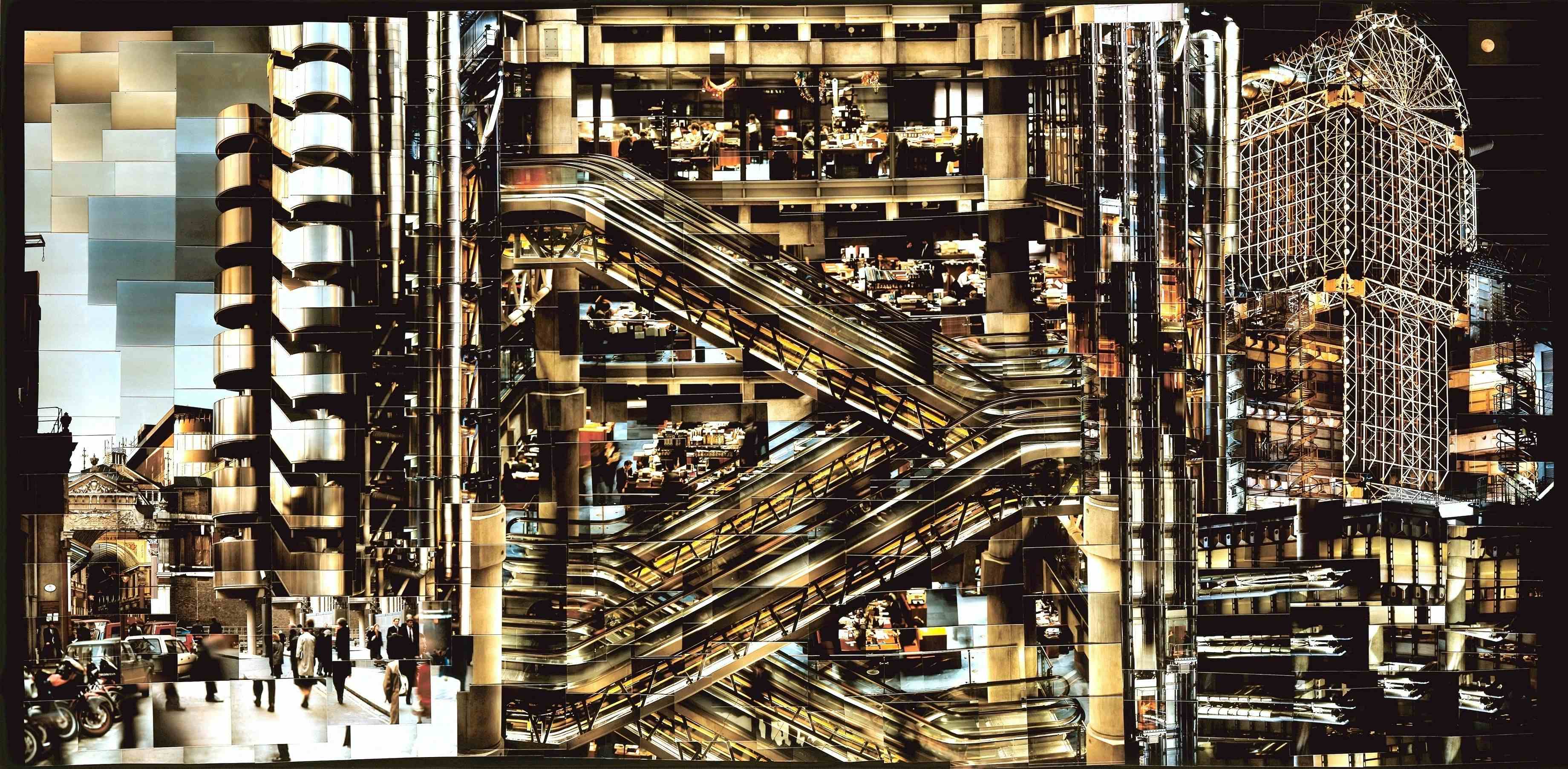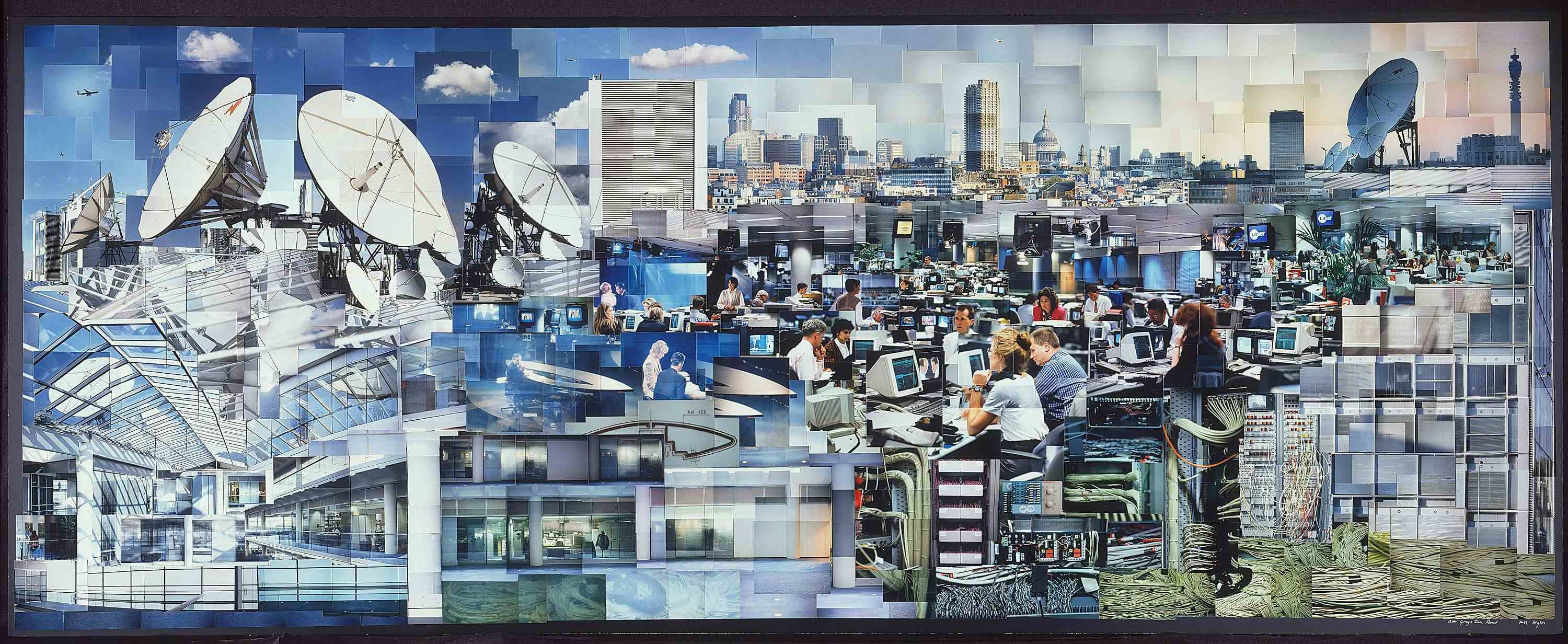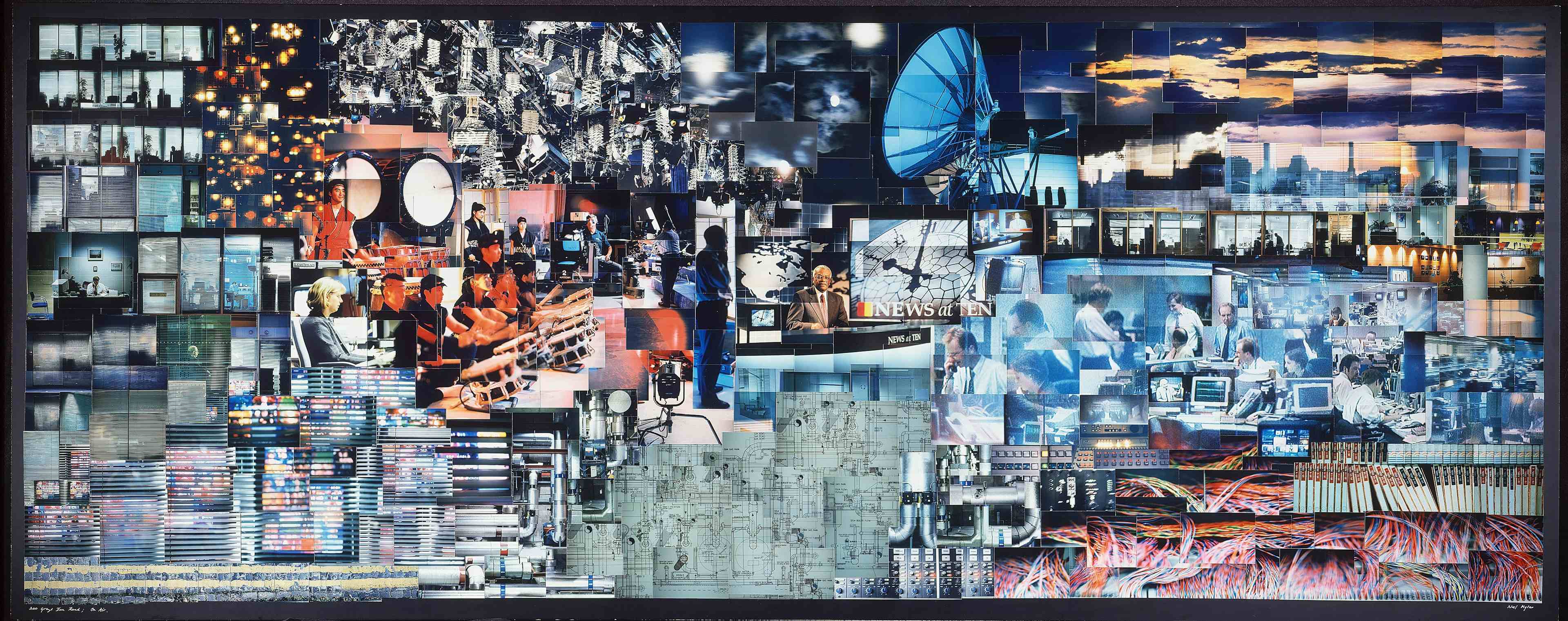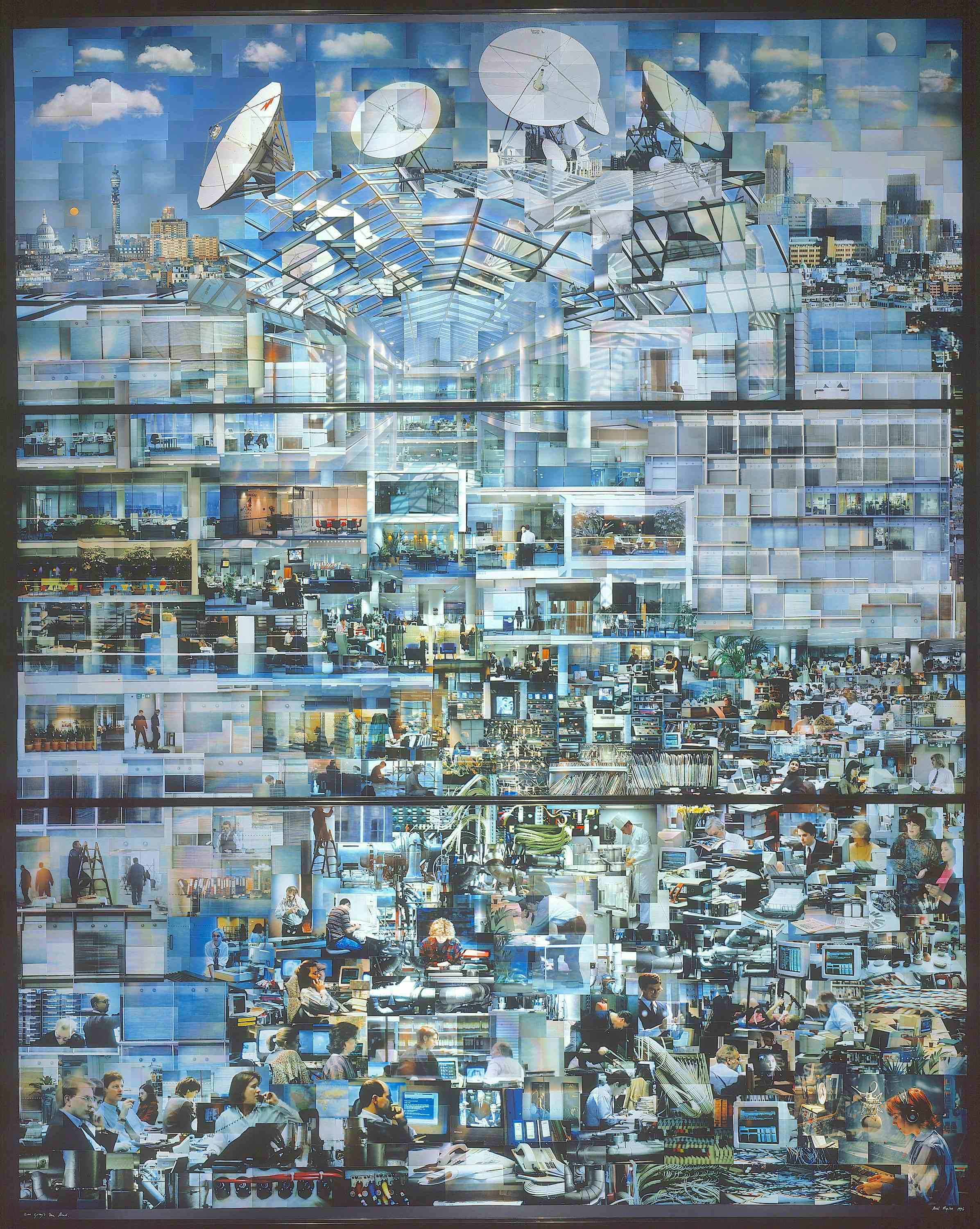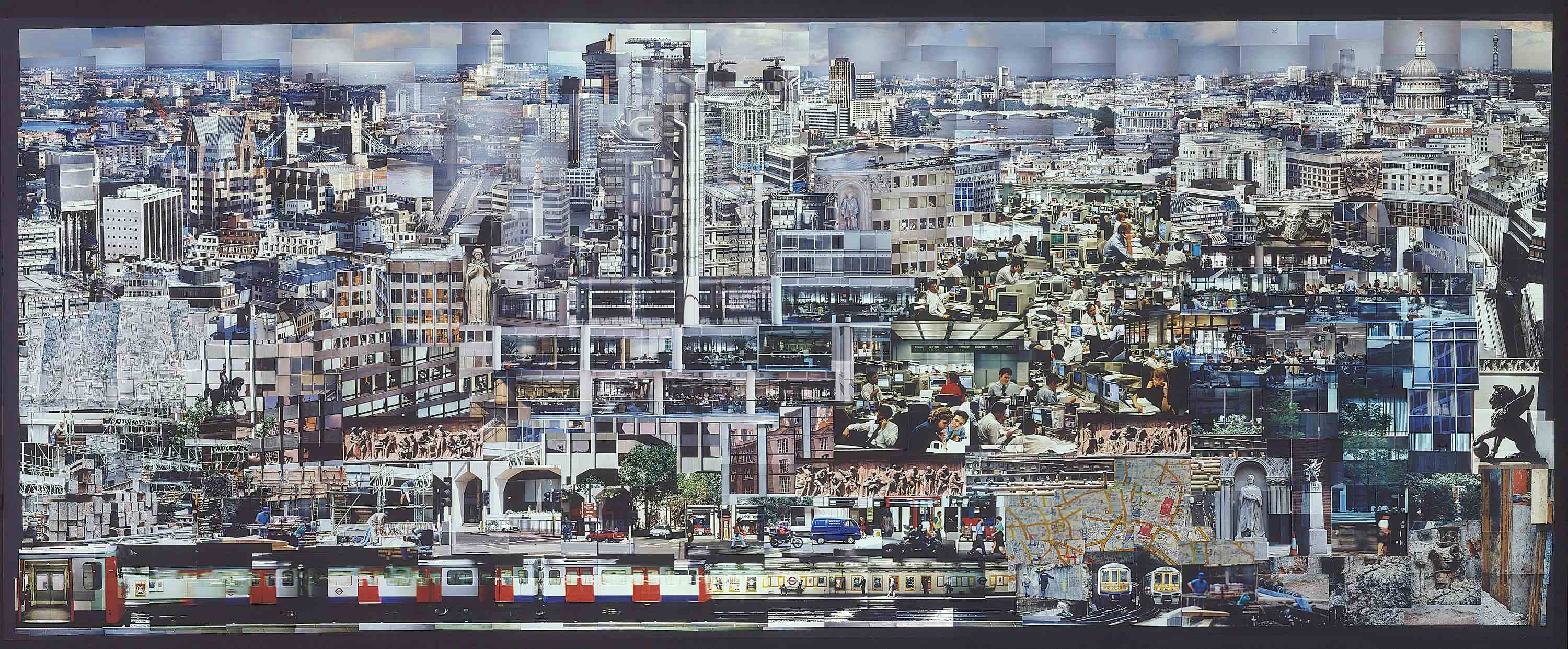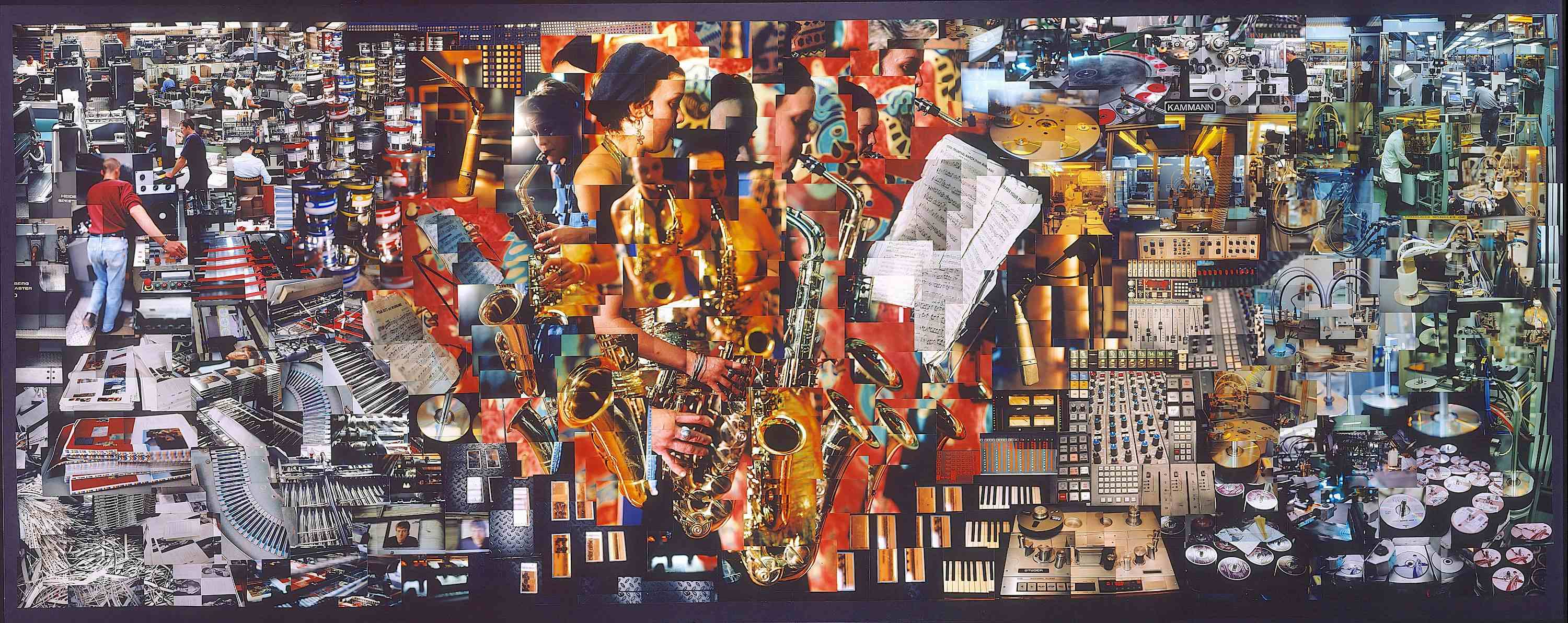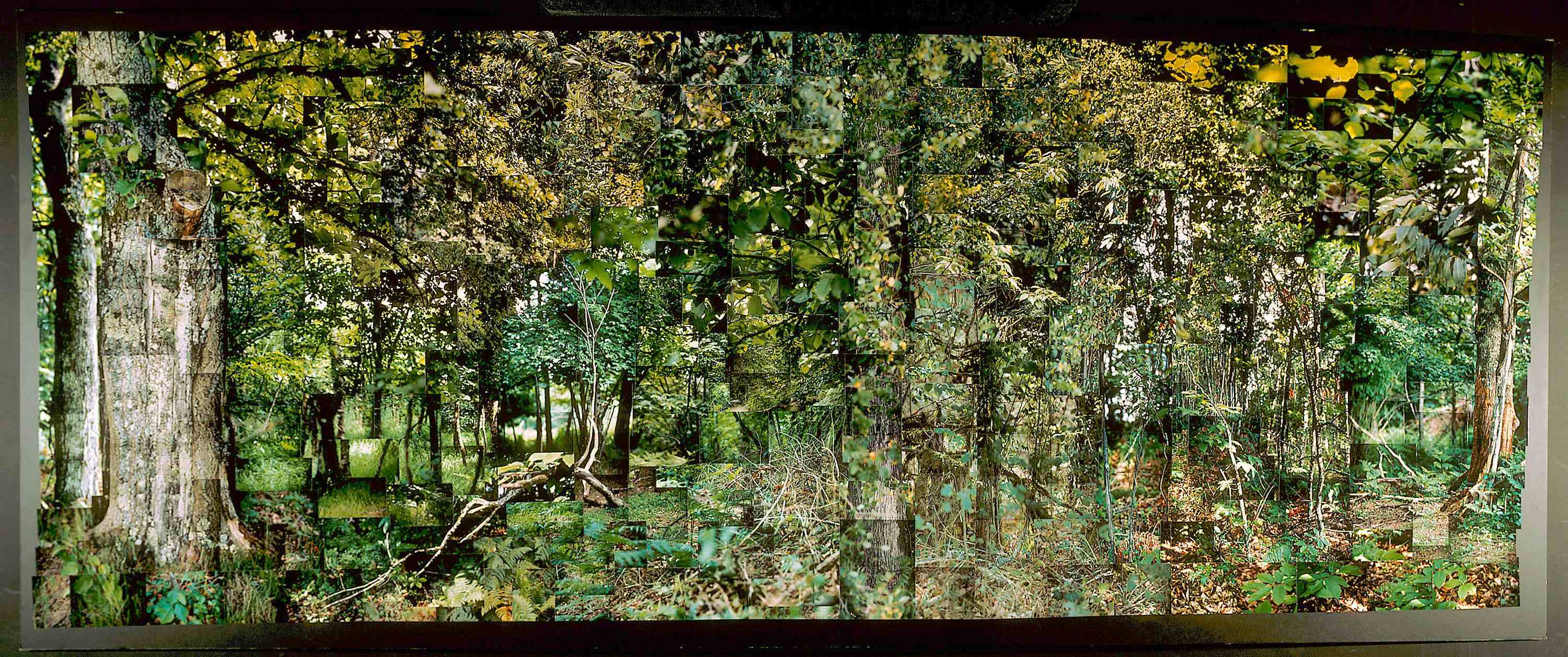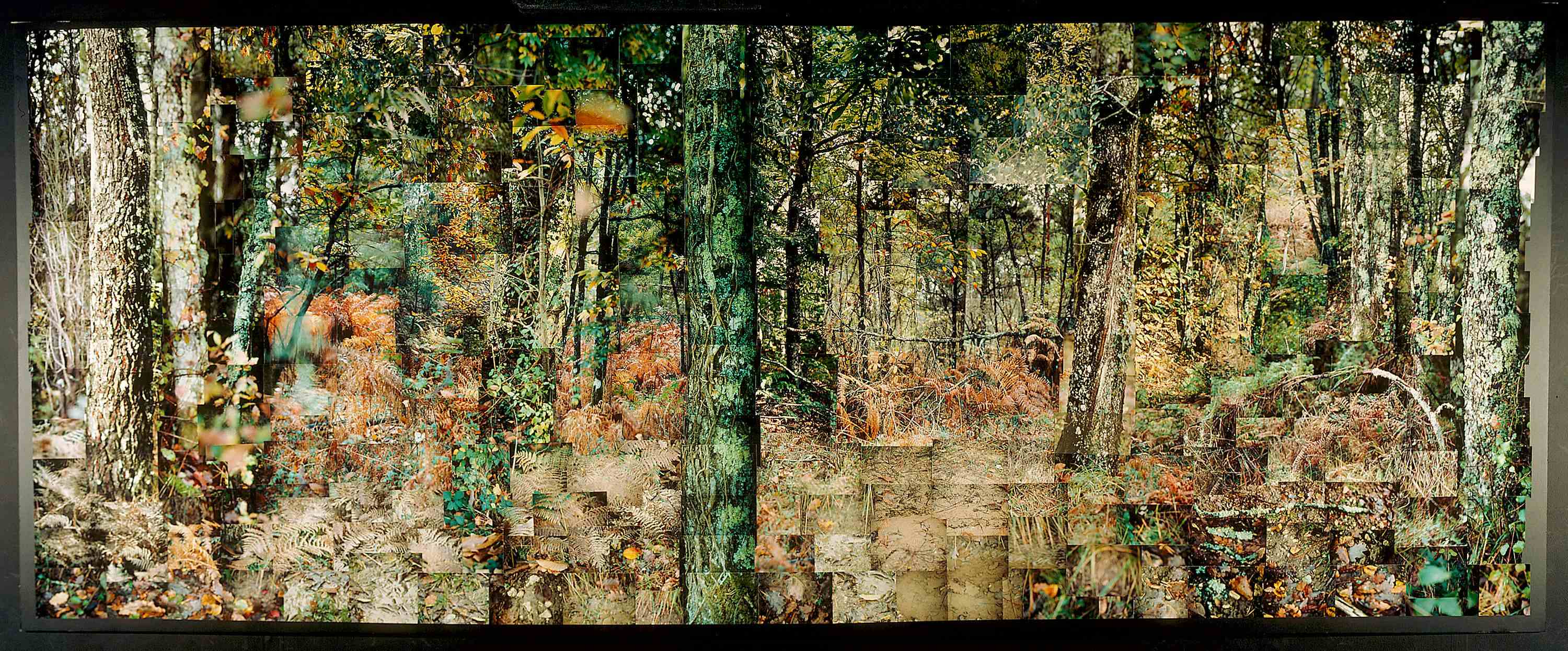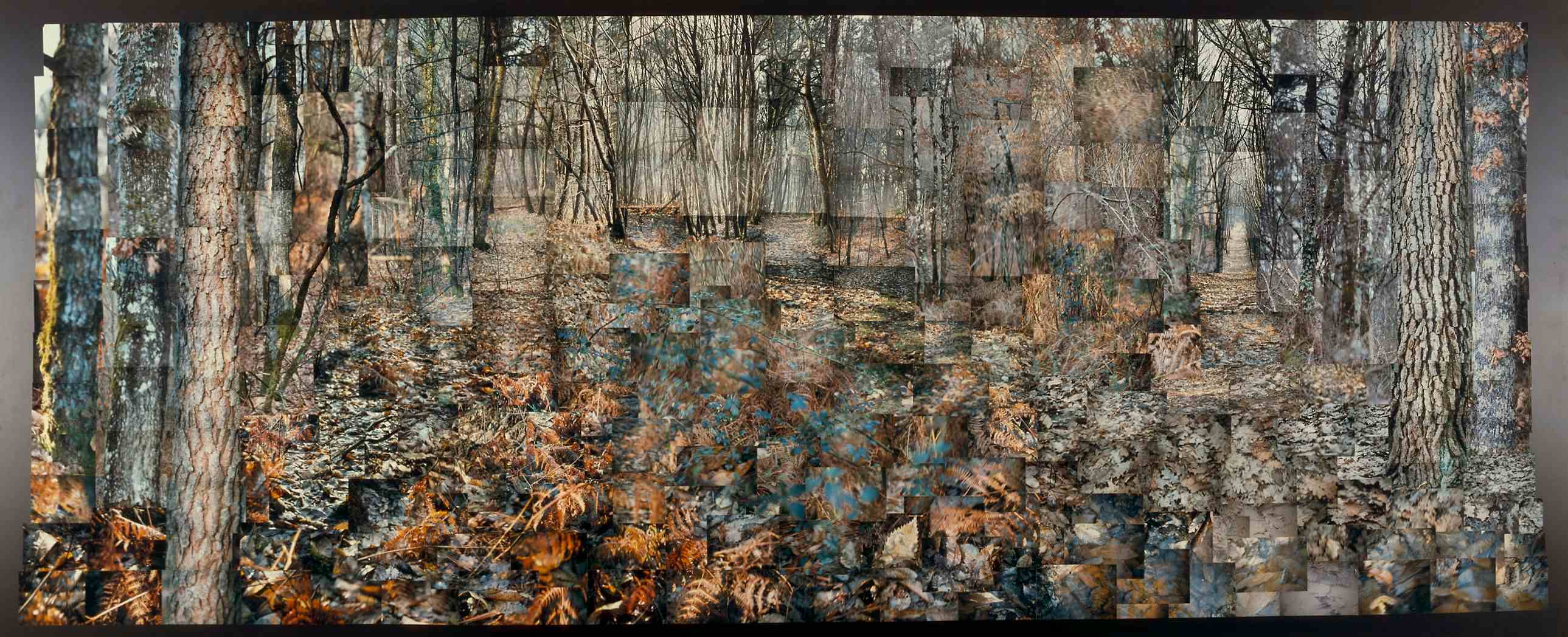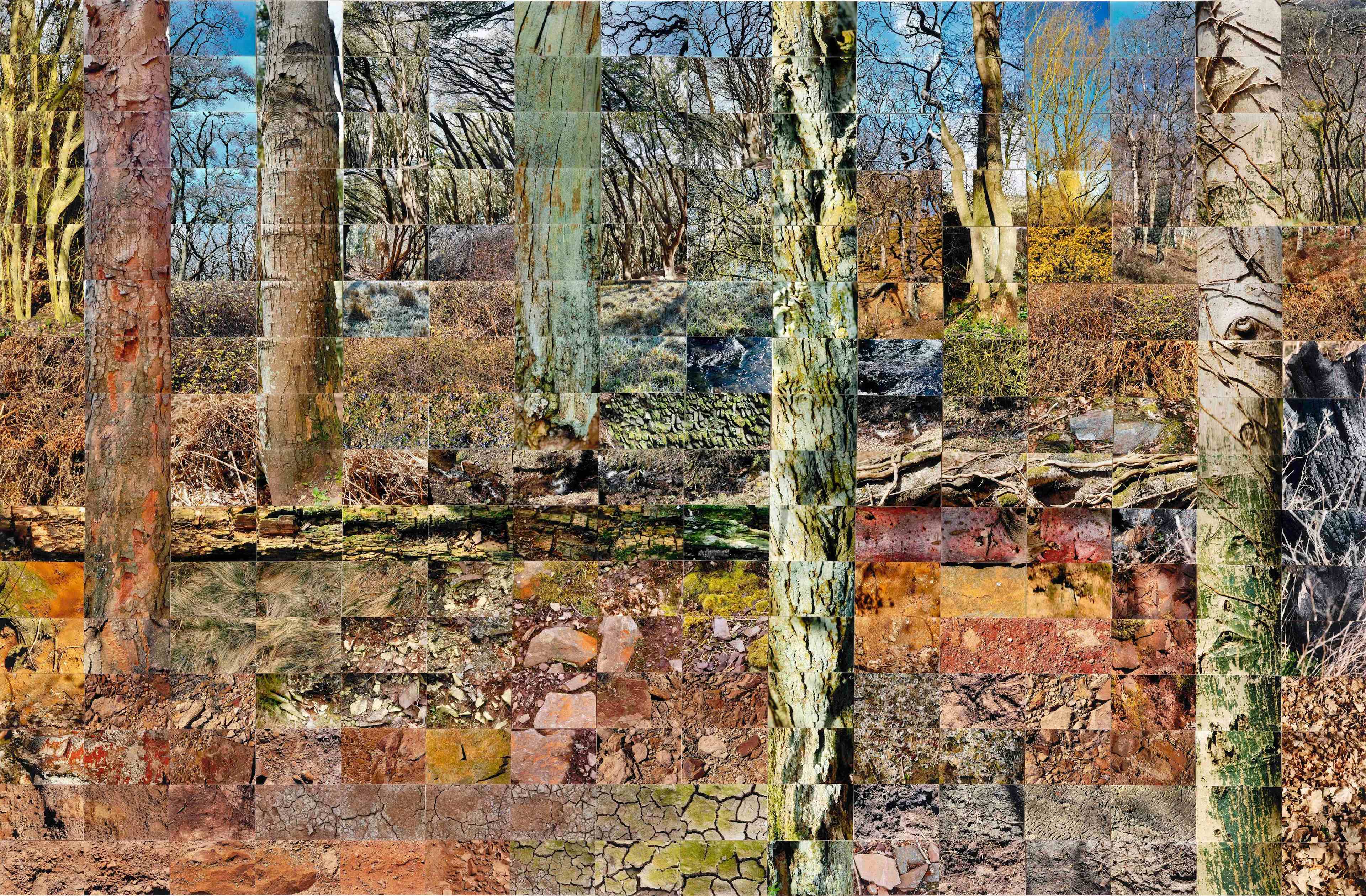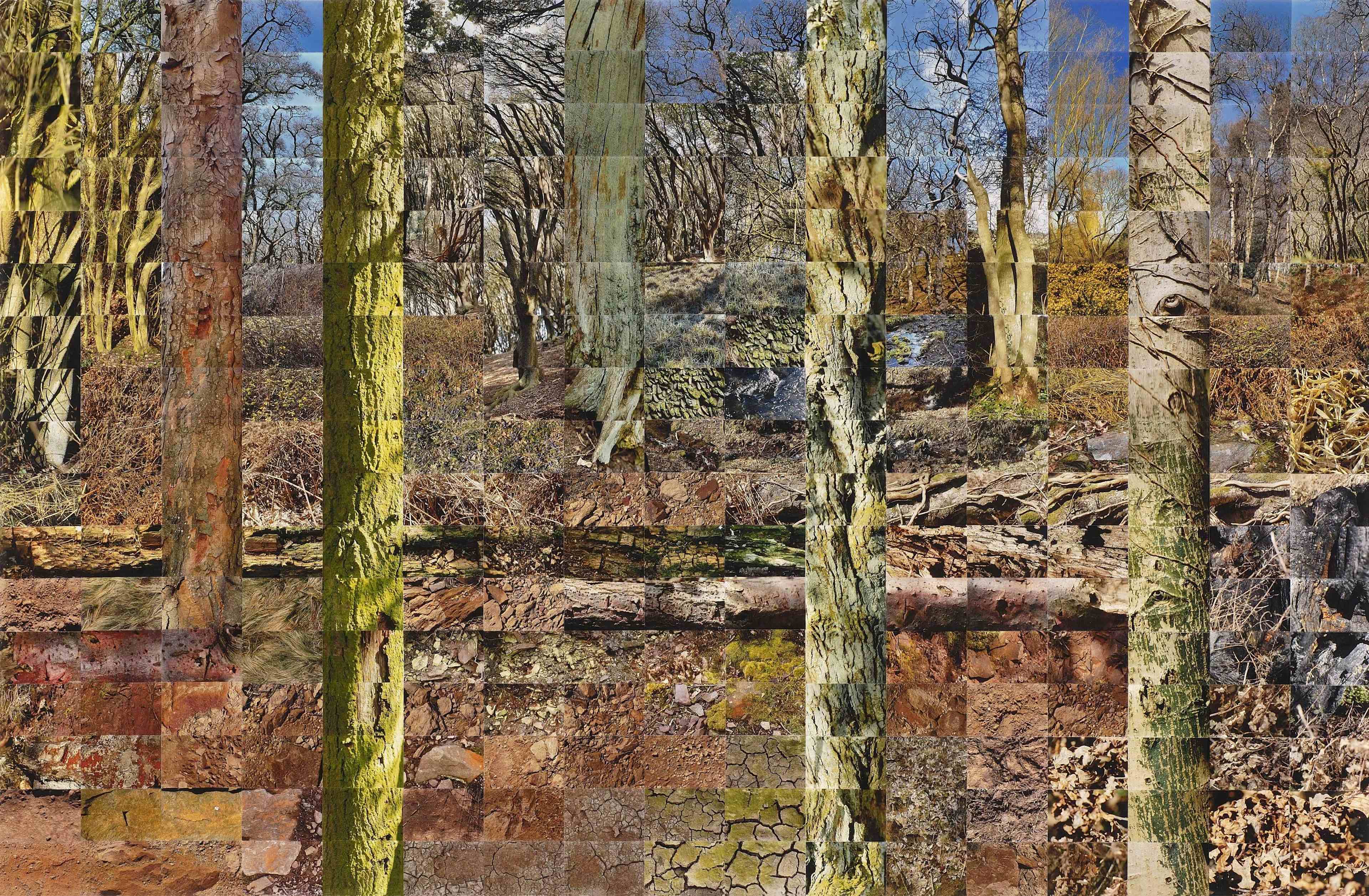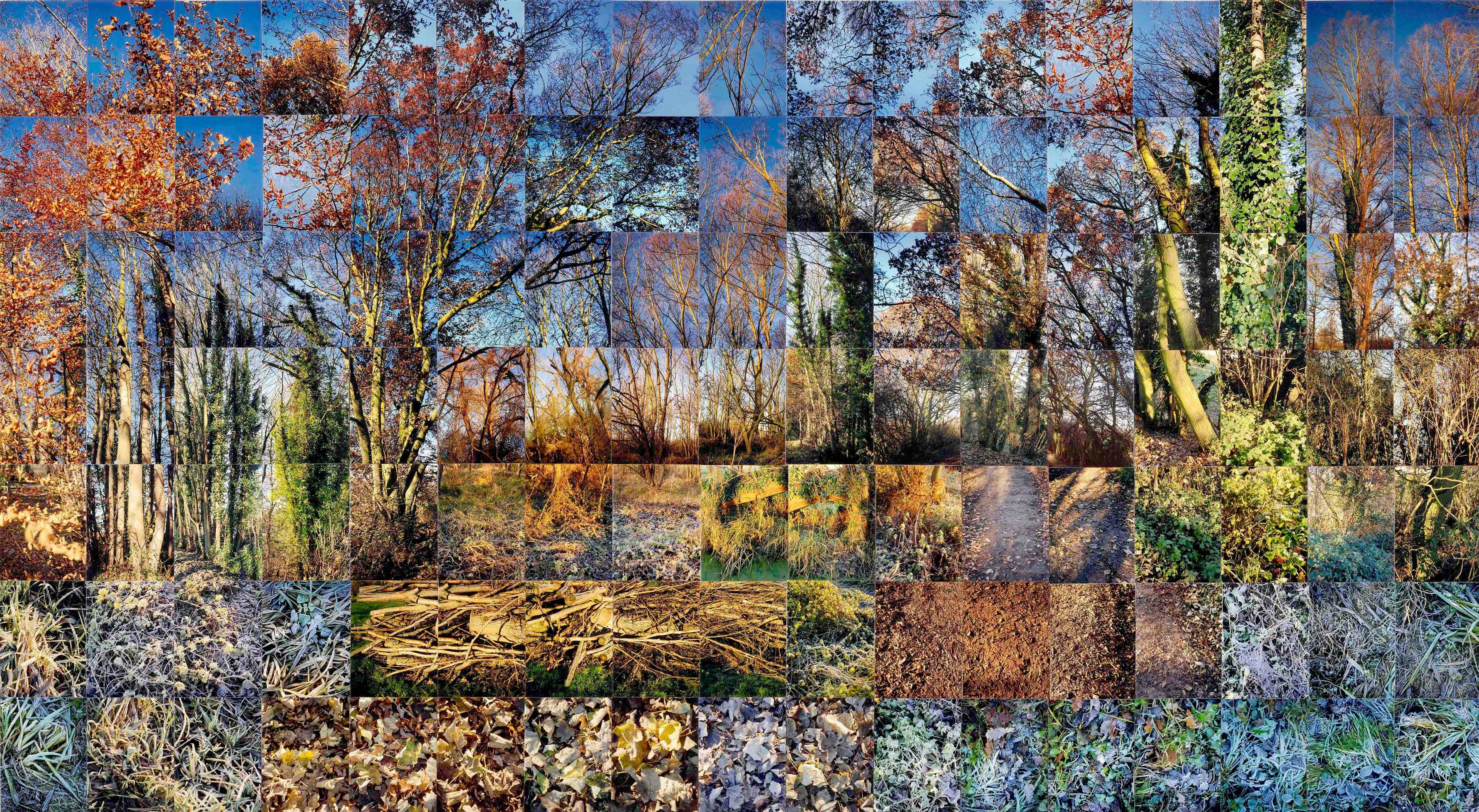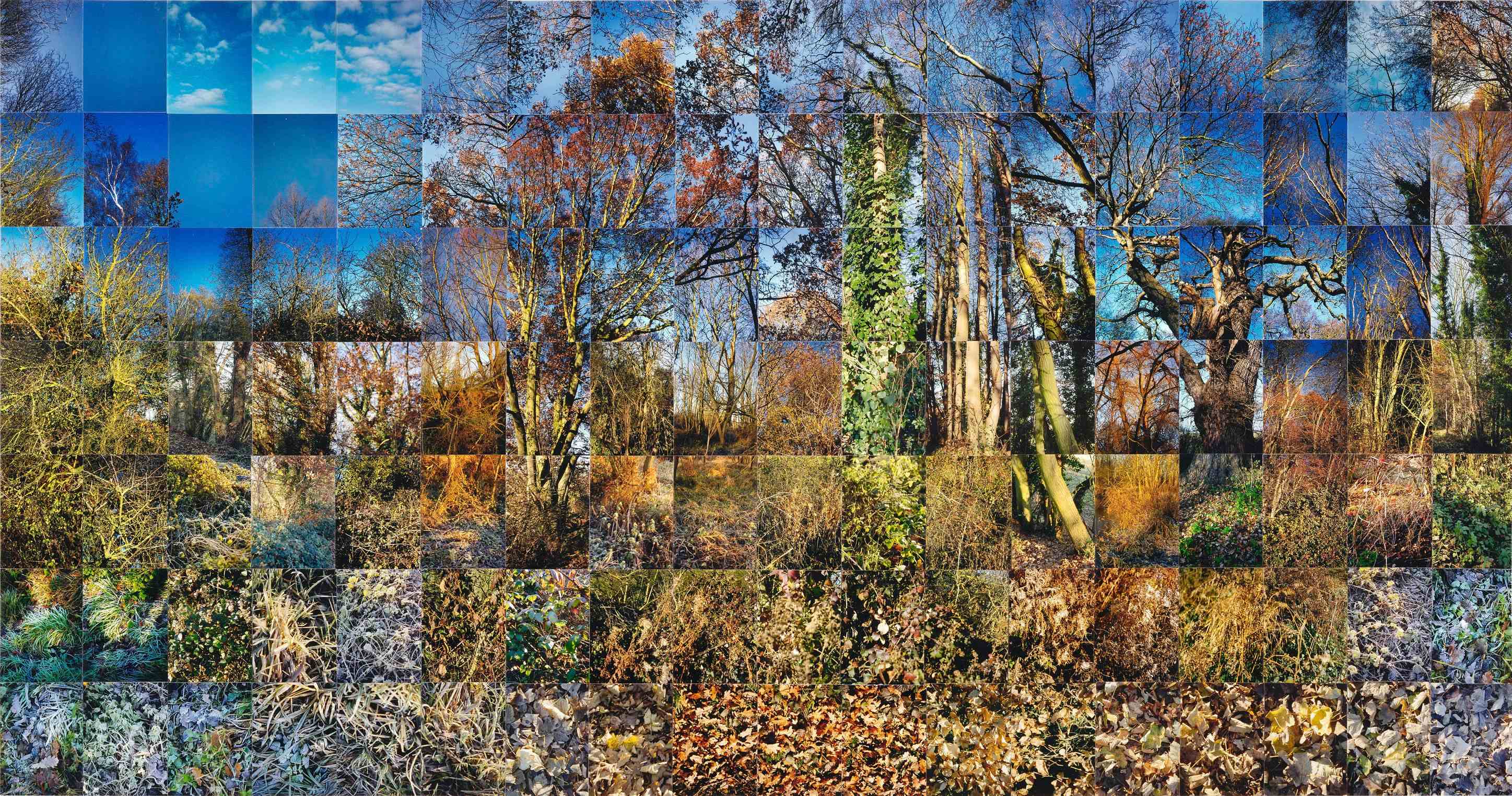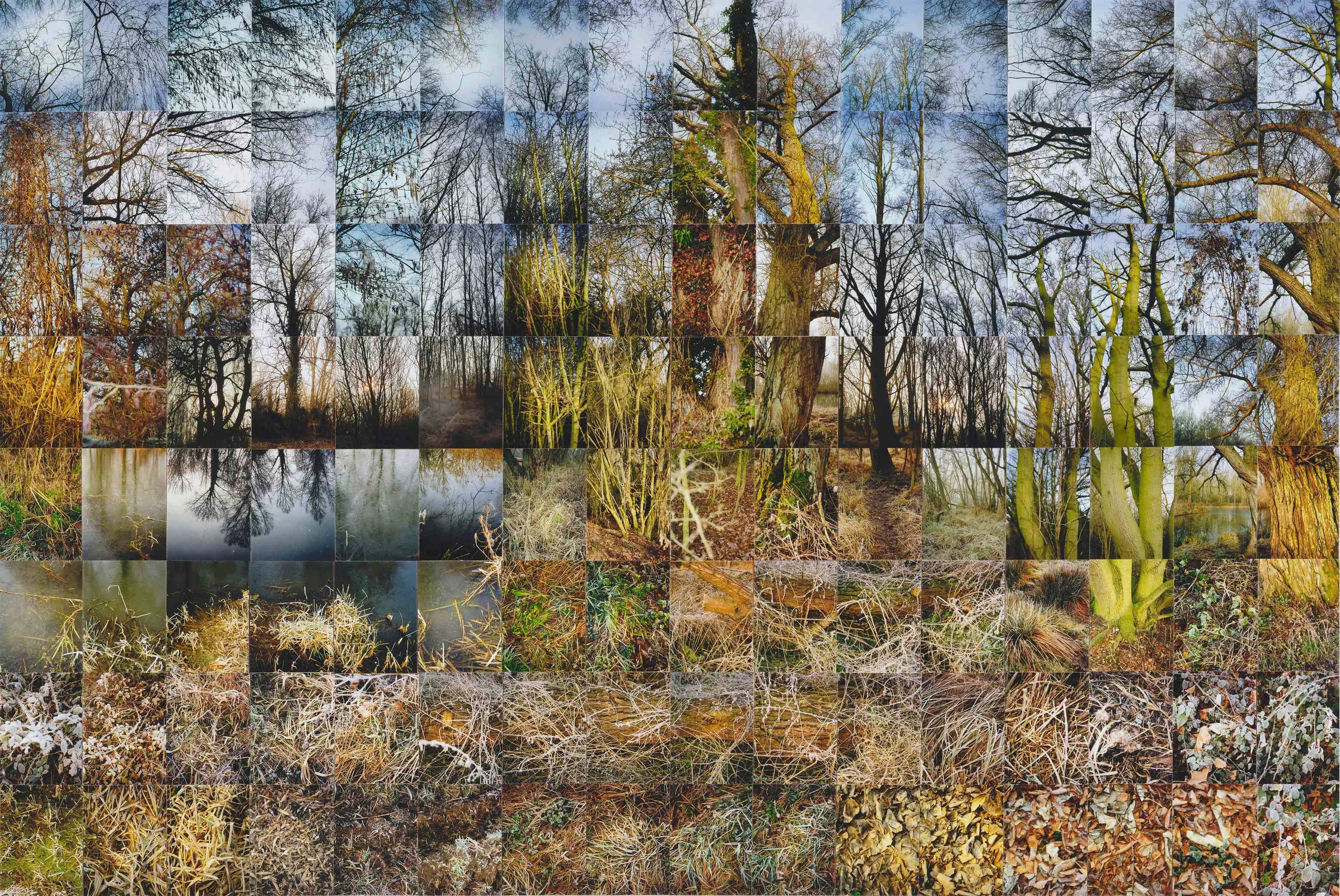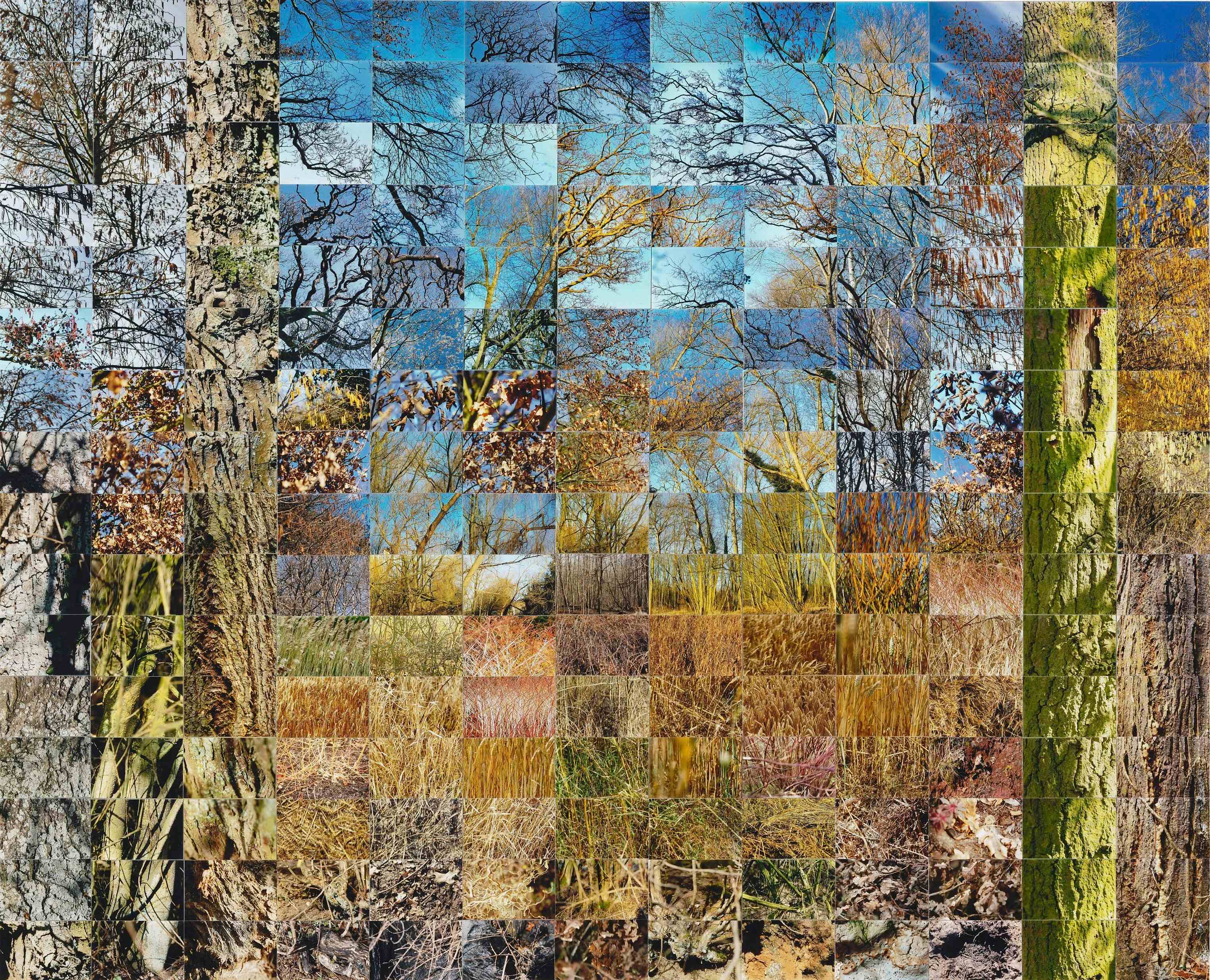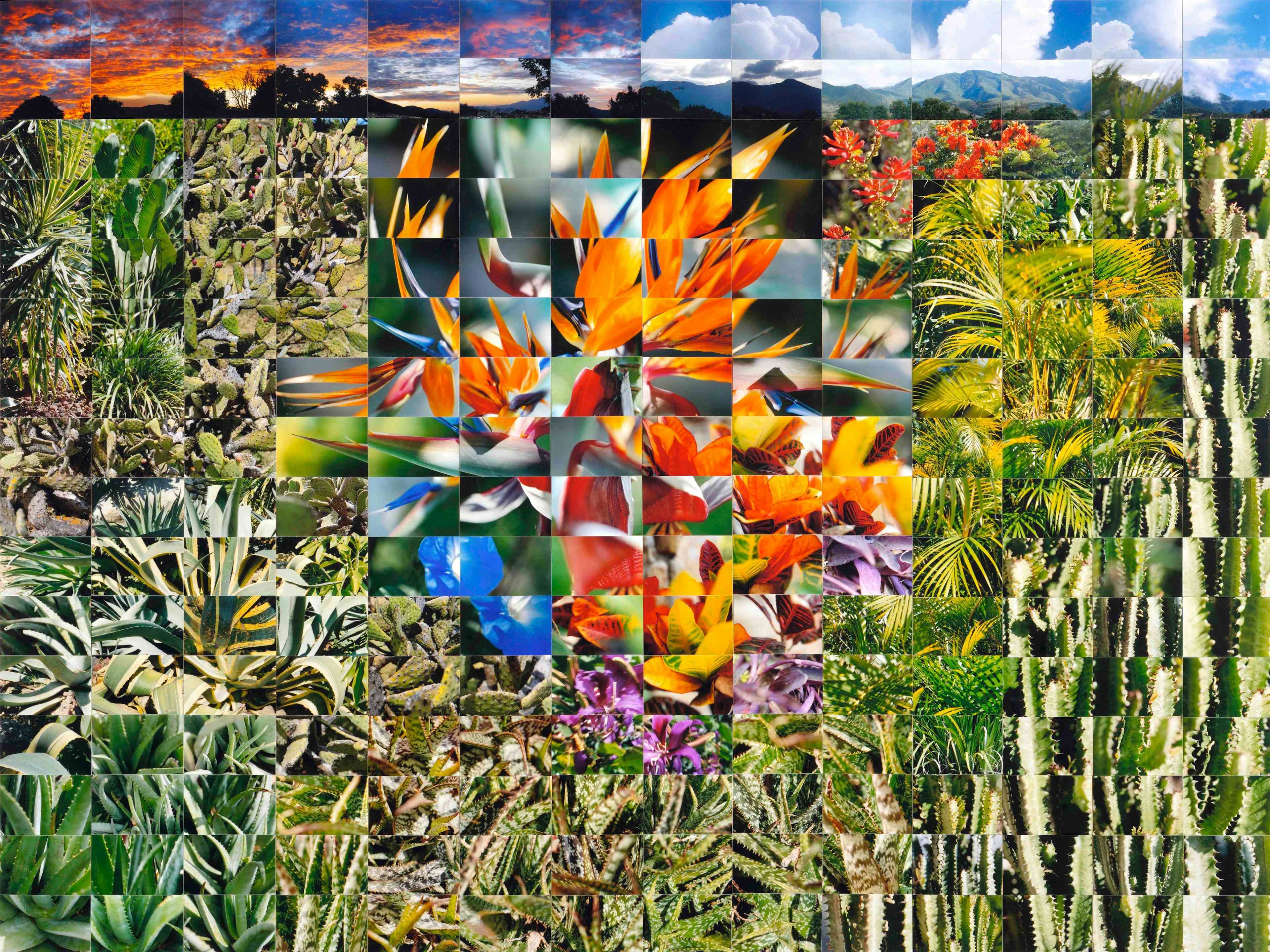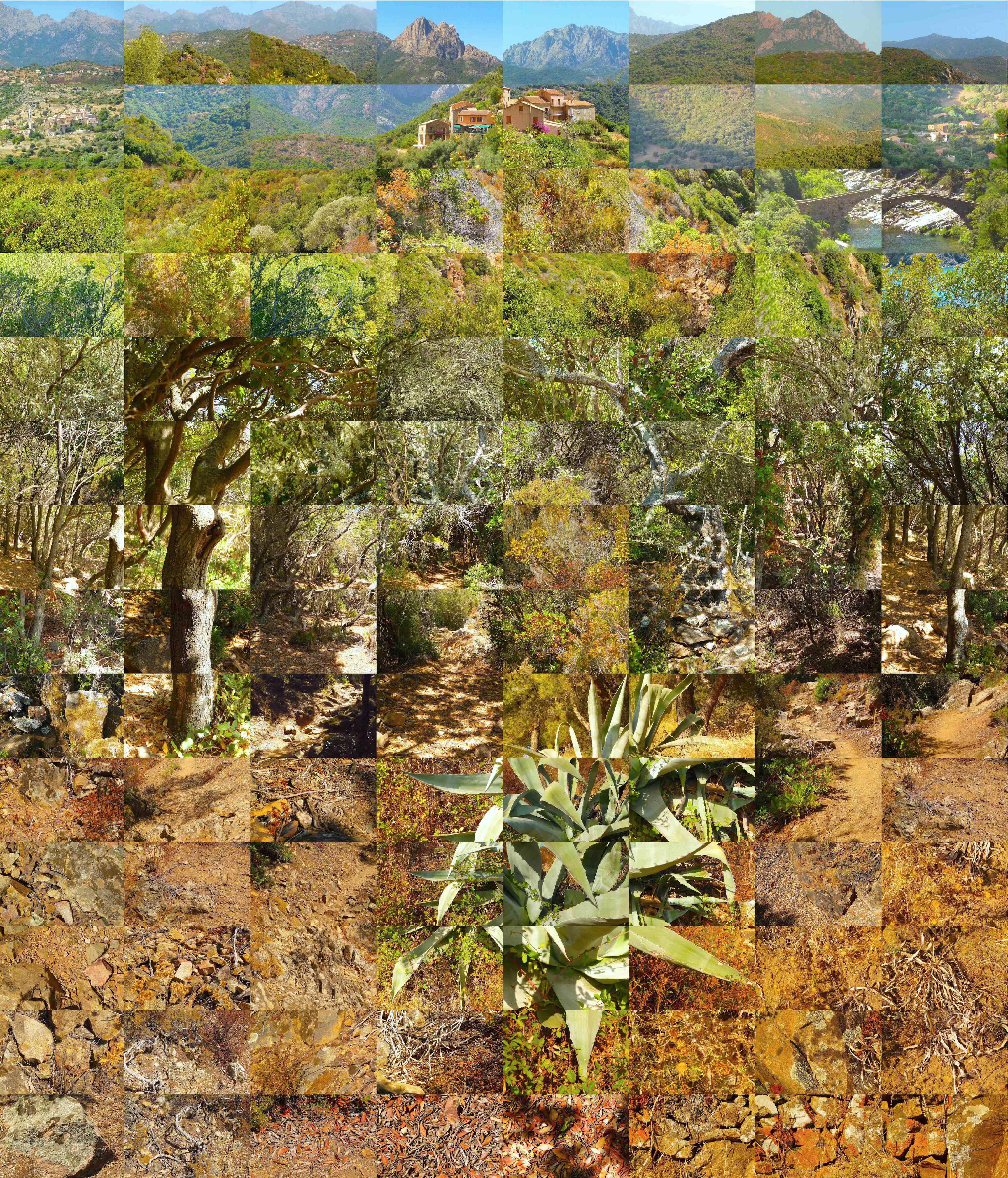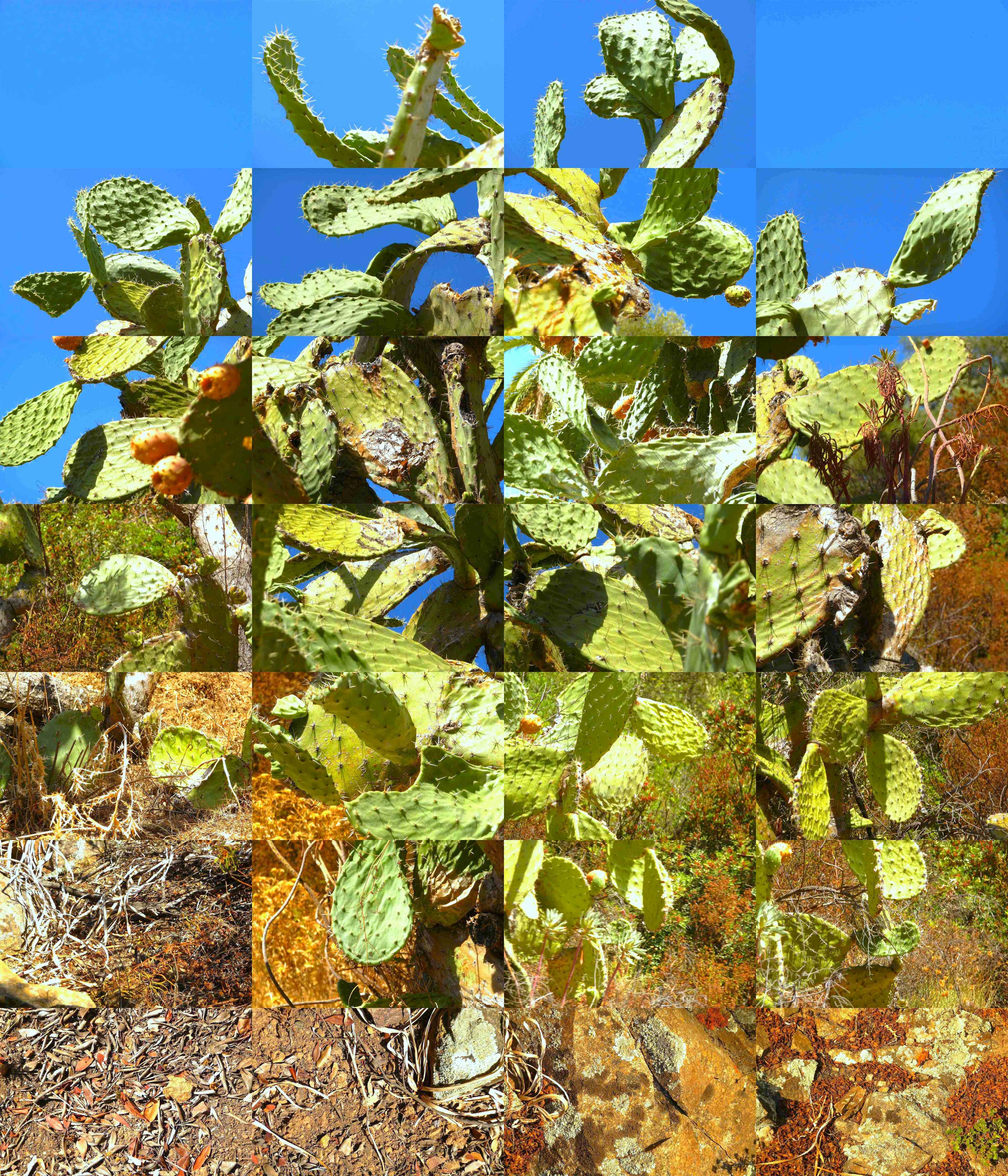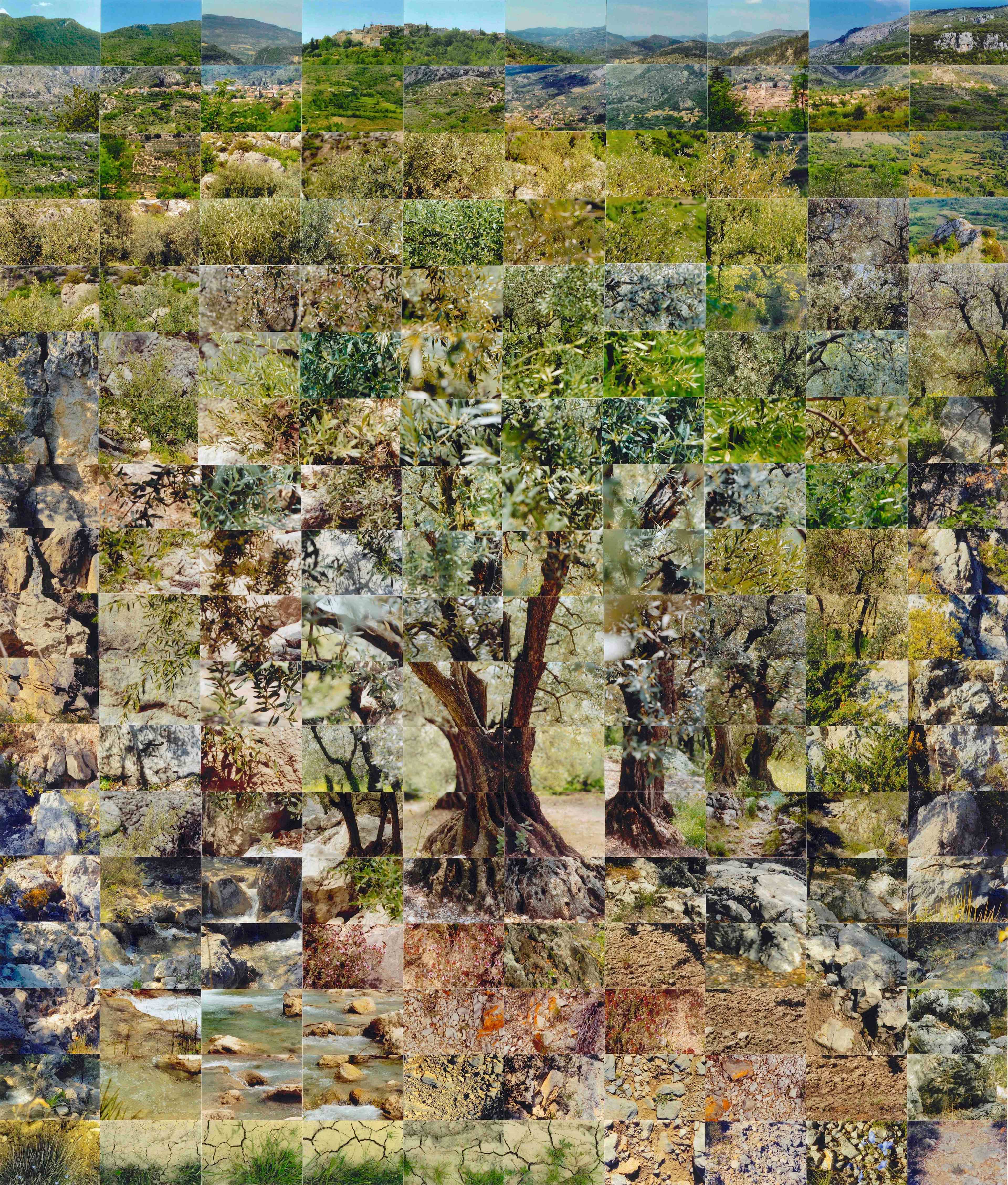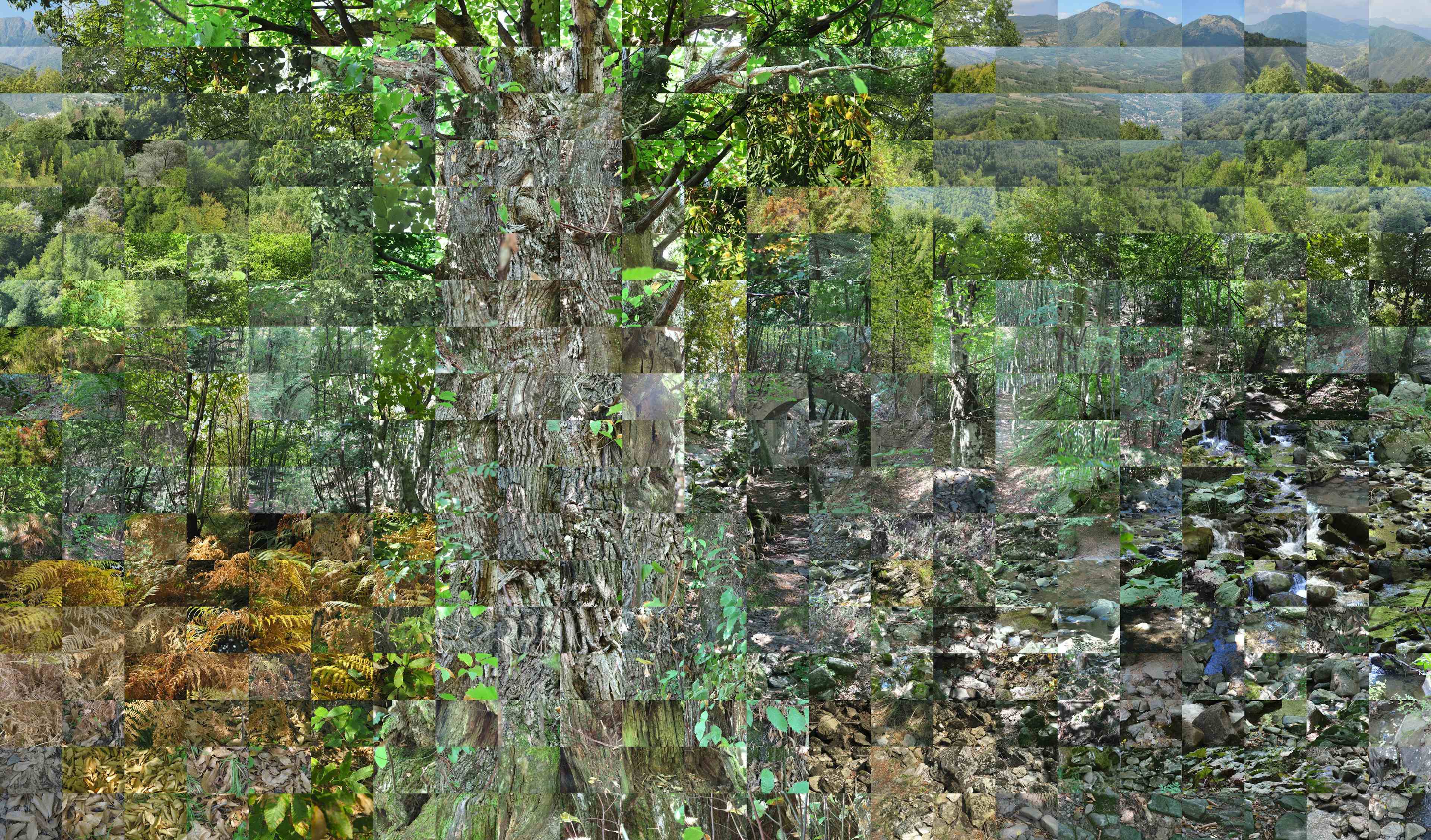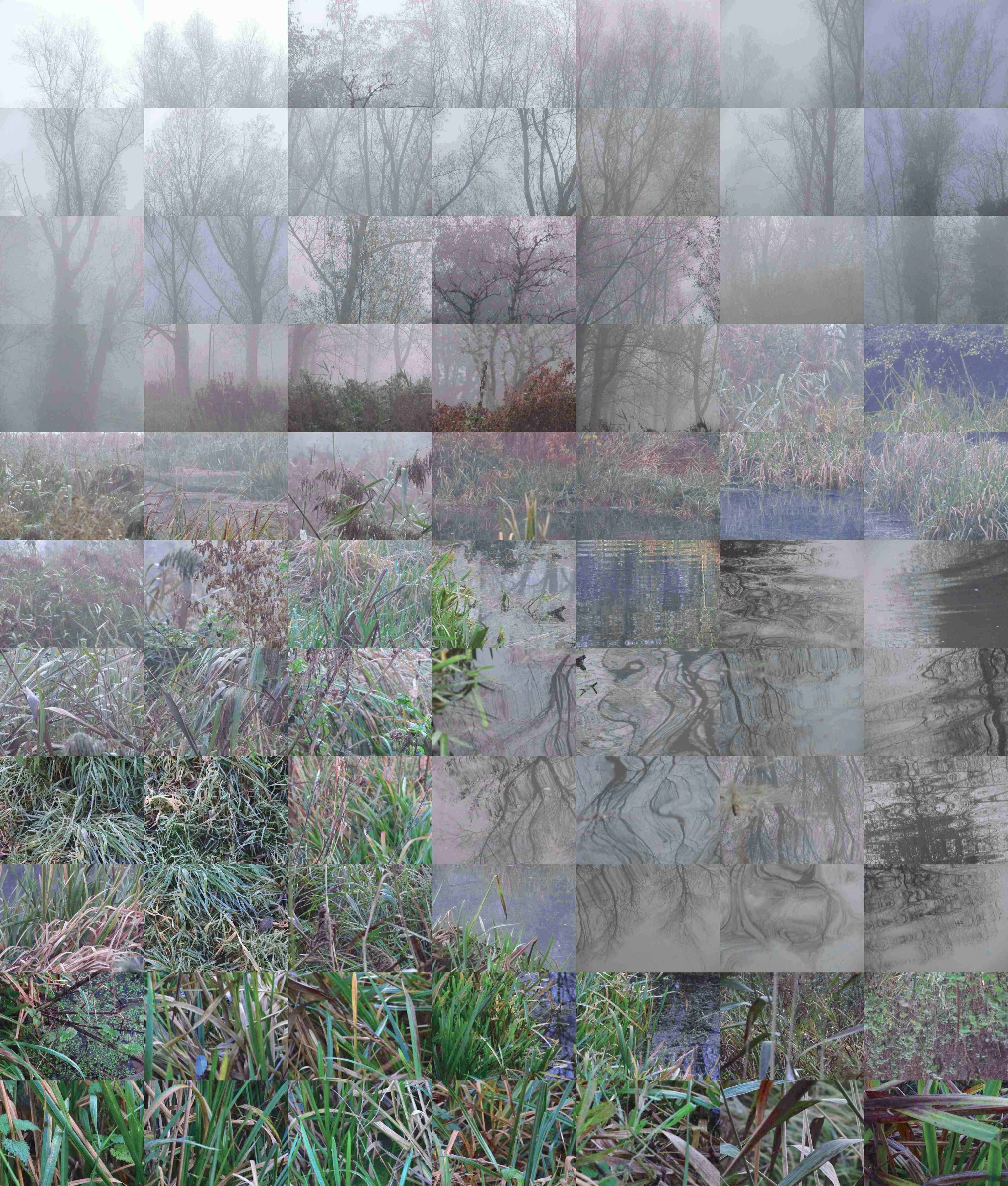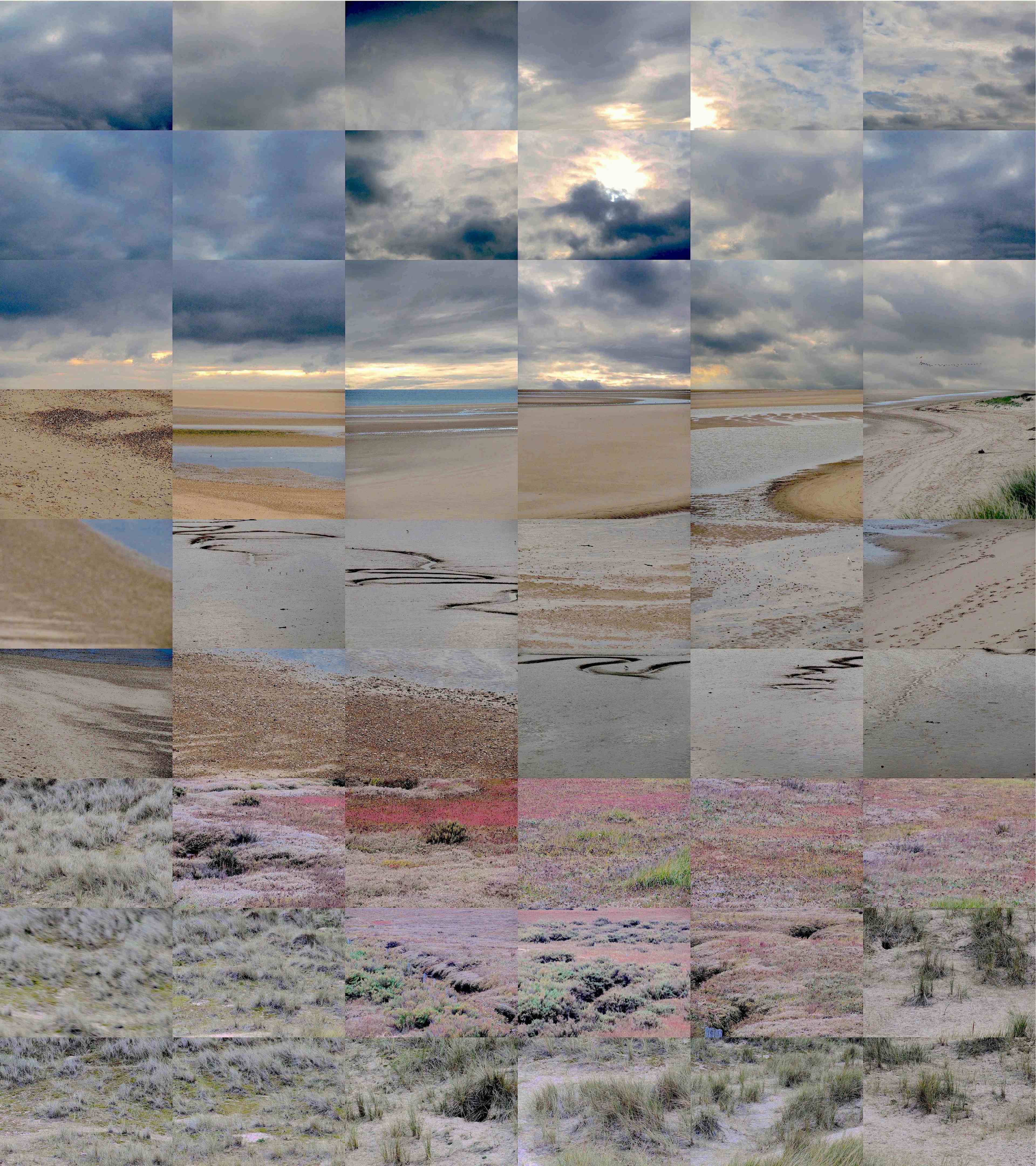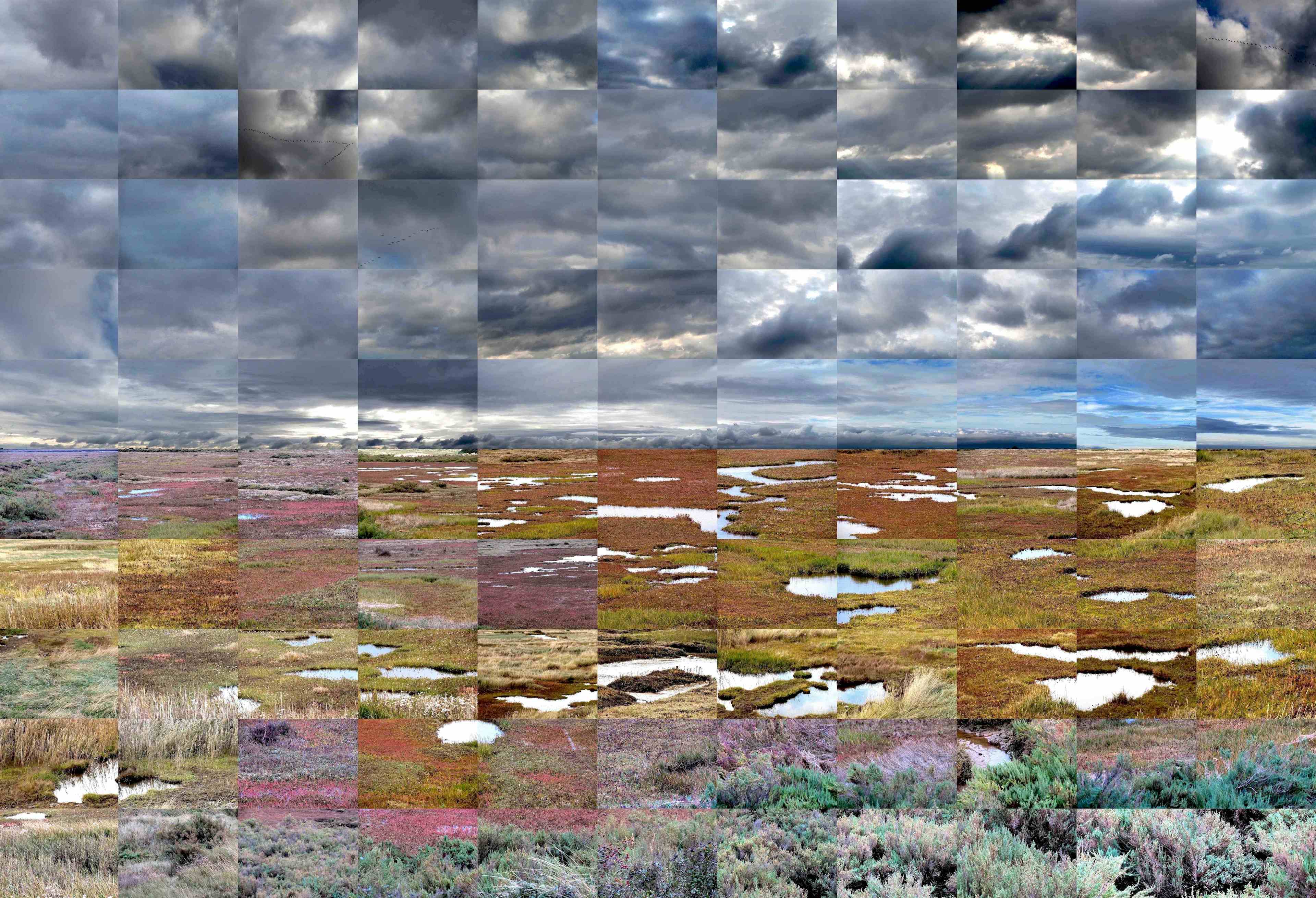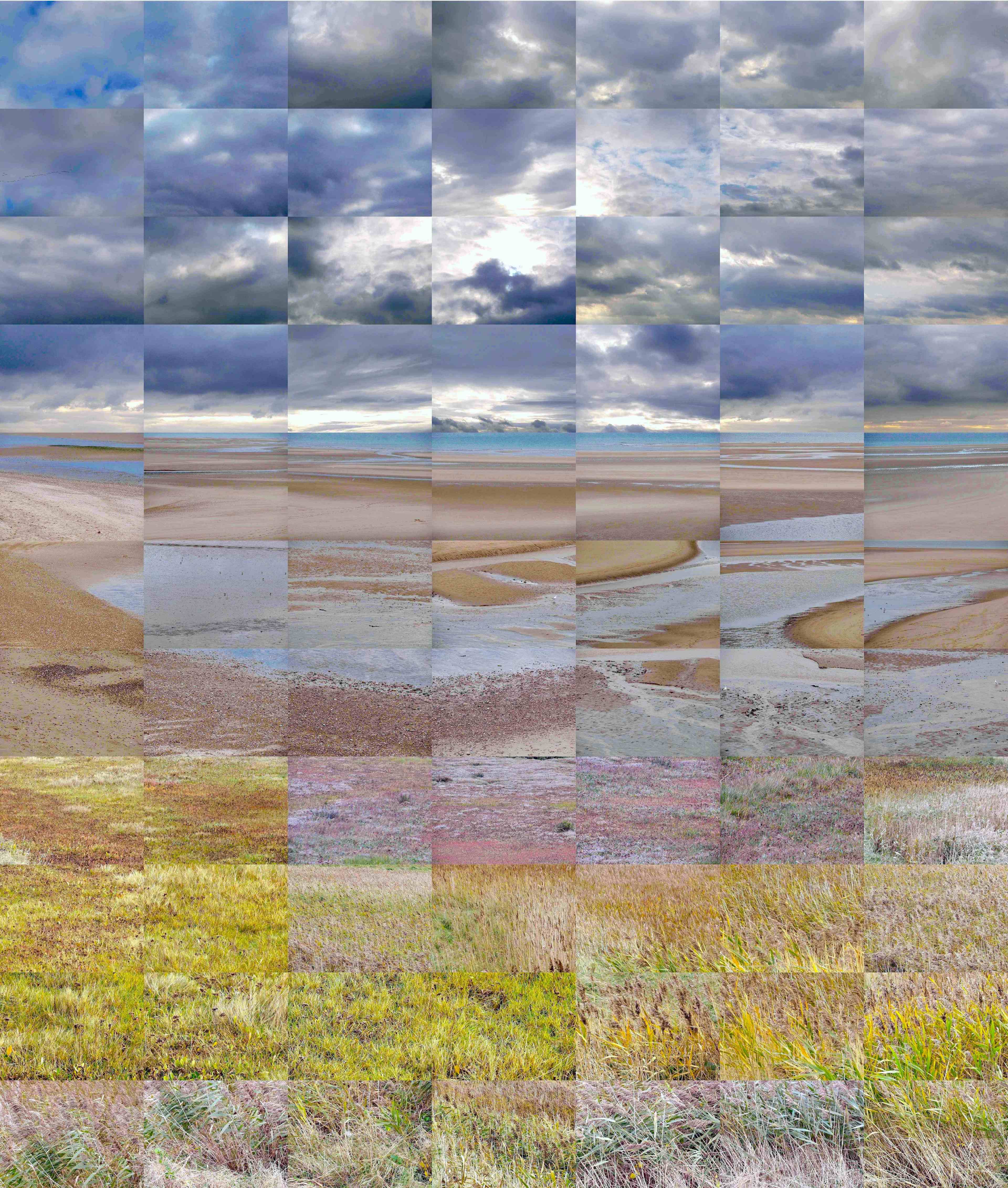The challenge I faced with photography was that the instantaneous static viewpoint, provided by the camera’s lens and shutter, didn’t represent the continuous flow of the act of looking. It seemed as if the still photograph had been held back to the level of the dictionary; the single word. It was the visual equivalent of overlooking the potential to link words to convey ideas and meaning. I couldn’t accept the notion of an isolated, decisive moment being capable of encapsulating our experience of life.
I photograph whatever catches my eye; accumulating this material over hours, days or weeks. Several visits might be made to the same location. I think of these frames as the components of the photograph, not photographs themselves. The creative part of the process takes place in the studio, away from the camera. I look for formal qualities of line, tone, texture and colour, as well as subject matter, to link the individual units. The composition evolves by adding and removing; searching for harmonious connections. I have worked with both negatives and prints. The negatives were exposed onto a single sheet of platinum and palladium paper. Recently, I have added colour contact prints to earlier palladium photographs; in some cases photographing the same tree a decade later.
It seems to me that photographers have largely adhered to the pictorial conventions that prevailed at the time when photographs were first made permanent. I am surprised that when painters broke away from following renaissance laws of perspective at the end of the 19th century, photographers didn’t go with them. It makes no sense to say photography liberated painters to explore new modes of depiction. It is worth noting the first exhibition of Cezanne’s watercolours in America, was held in Stieglitz’s own gallery, ’291’ in 1911 but seemed to have had little influence on photographers. There are centuries worth of modes of depiction that are not restricted to the single viewpoint, for photographers to inspect.
Perhaps it’s true that good photographs are made, not shot, taken or captured. The task for photographers is to transcend the mirrored anecdote to reveal significance in our surroundings that makes us pause for thought. Perhaps it’s always been this way. I think of my own work as exploring the territory between still photography and moving image, hence the umbrella title ‘Still Films’. My reference points are within painting, not photography. I find constant stimulus in Cezanne’s watercolours, Cubism, Romanesque art and Rothko’s painting.
